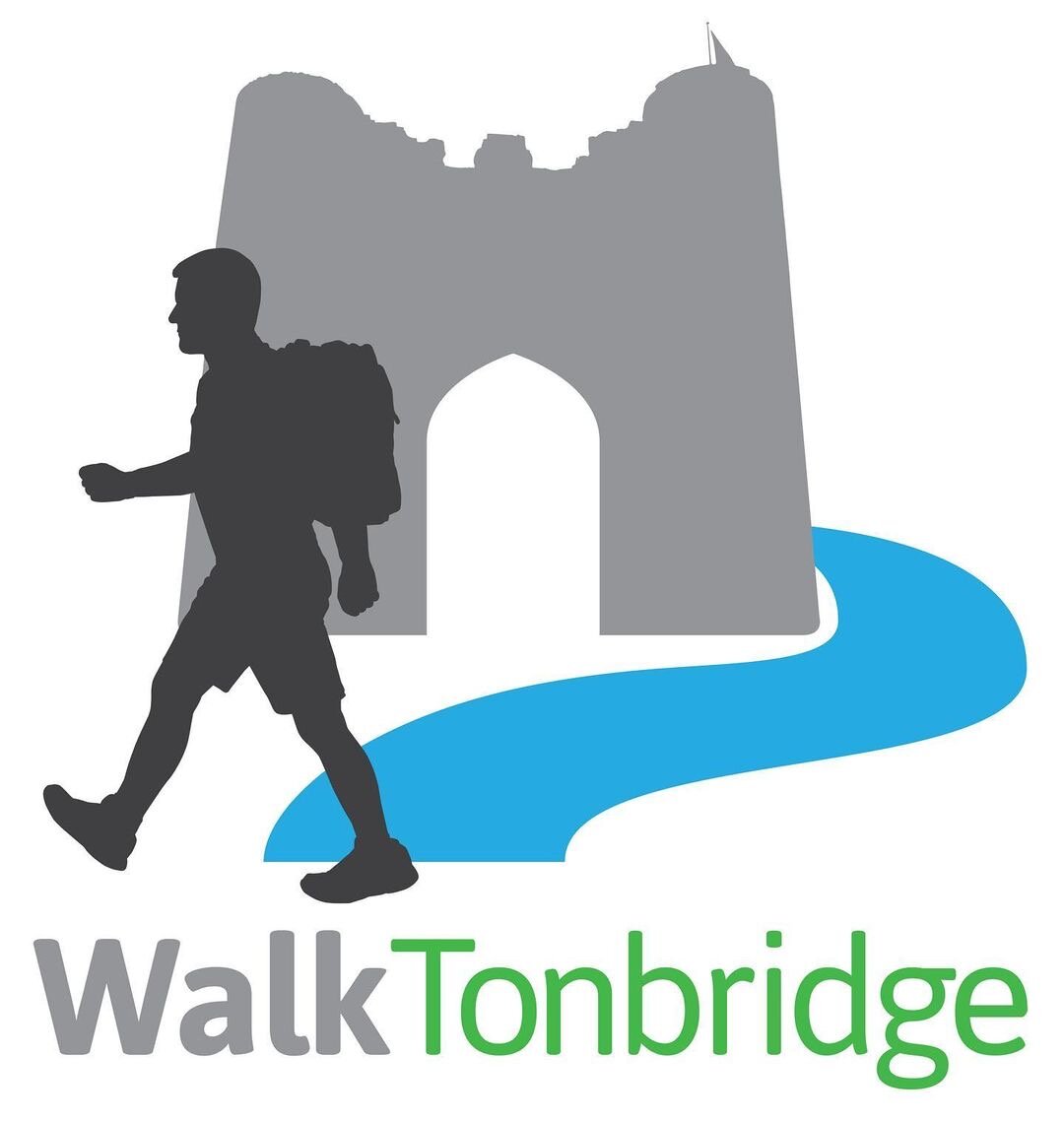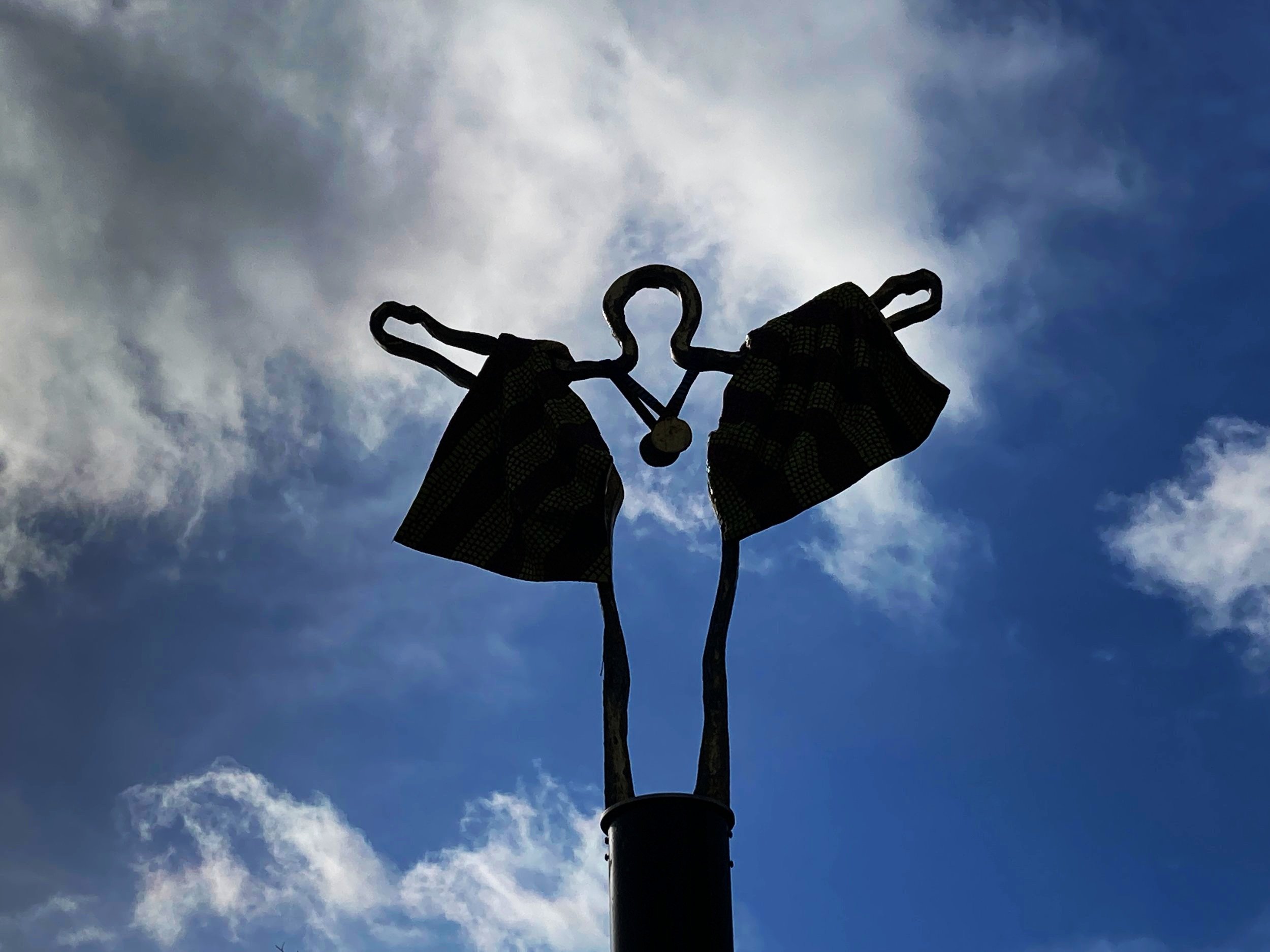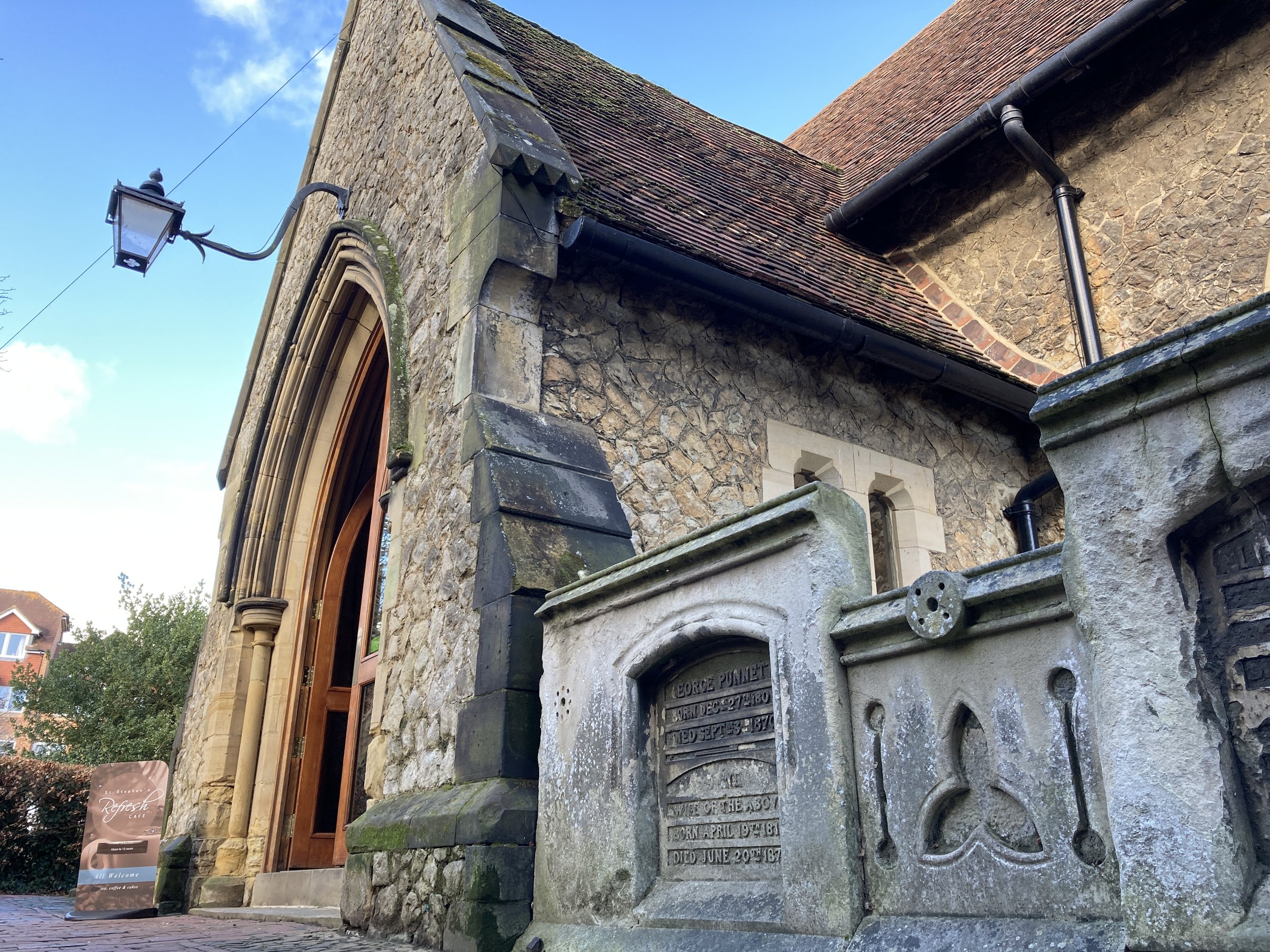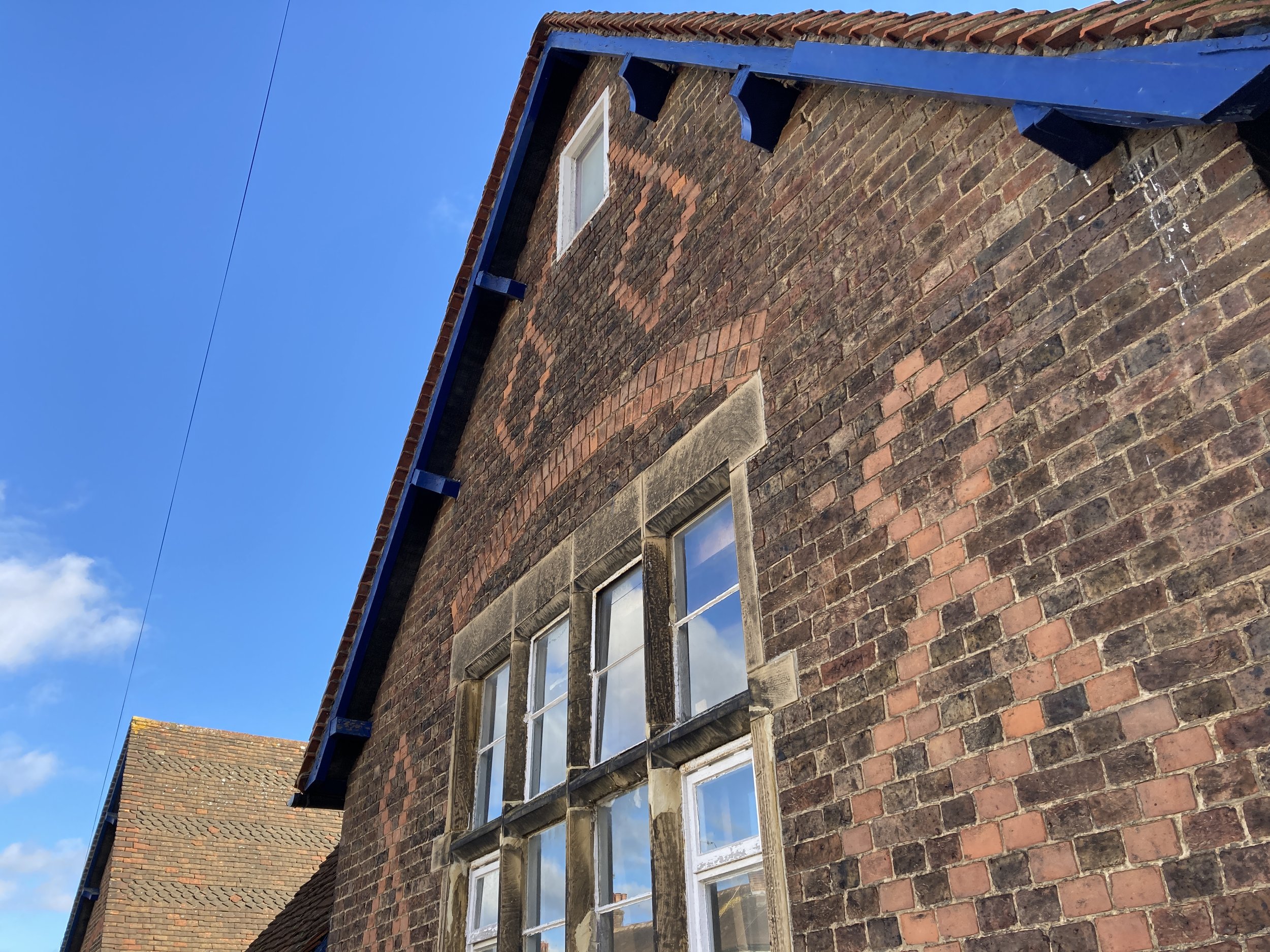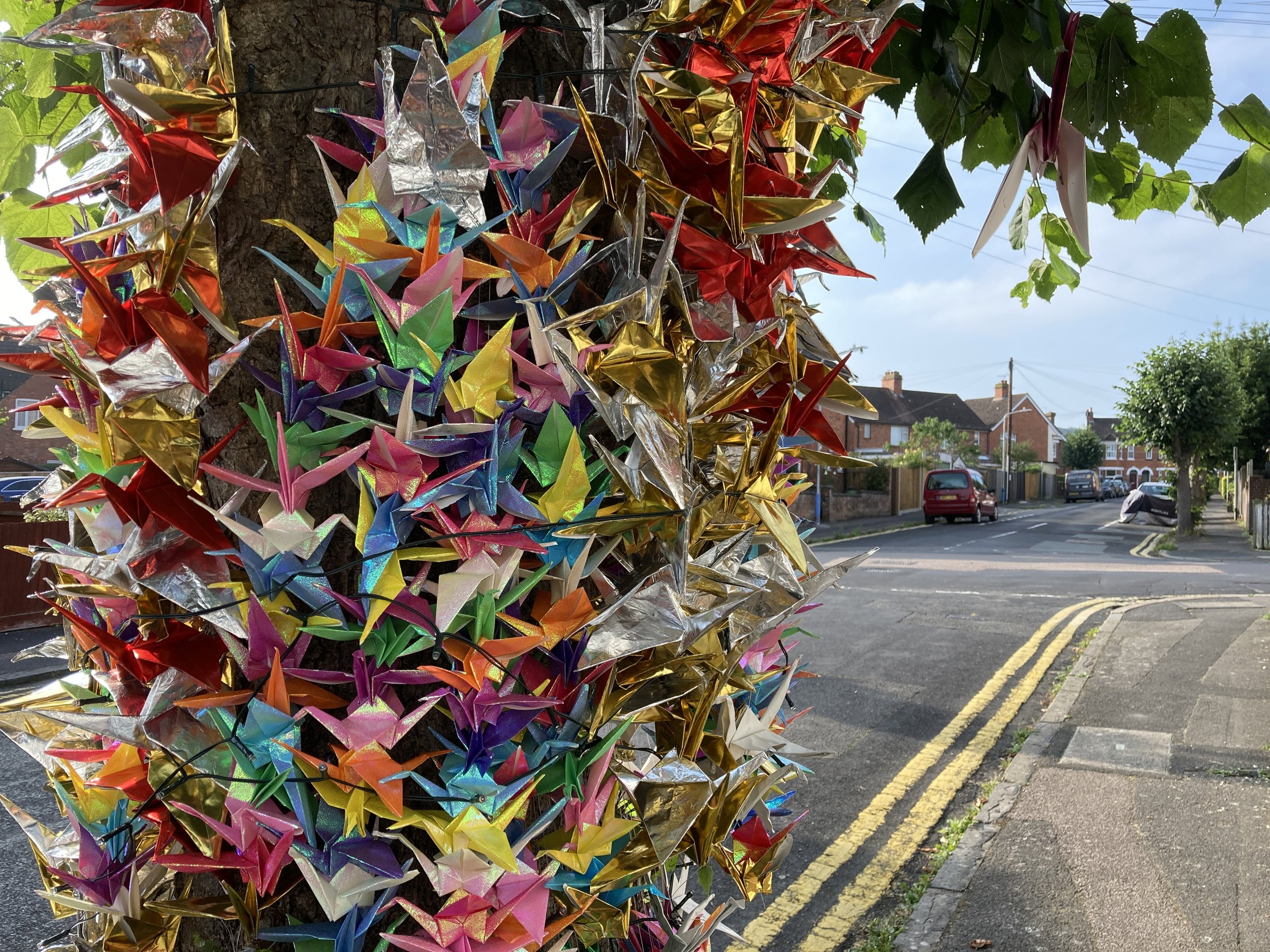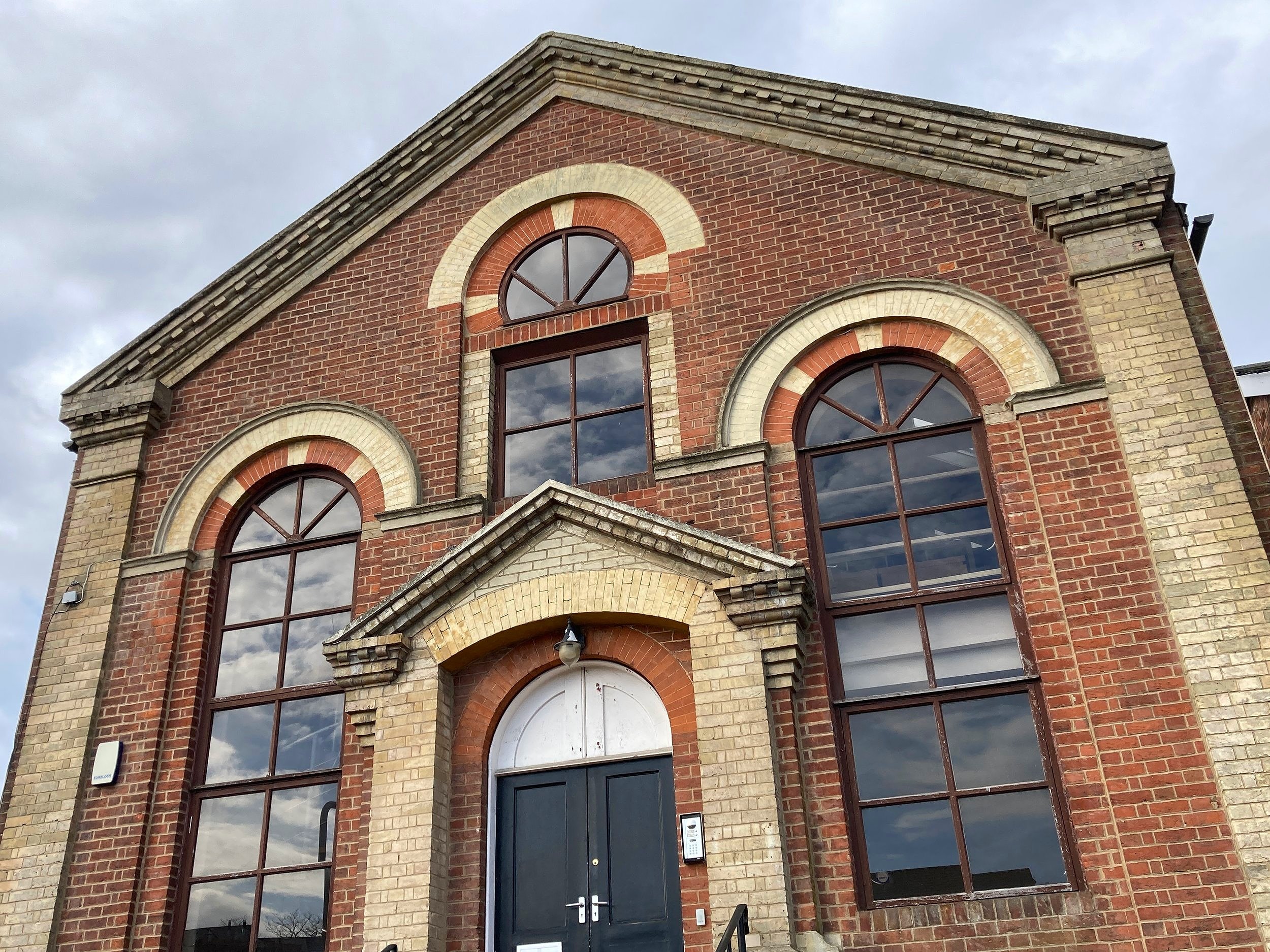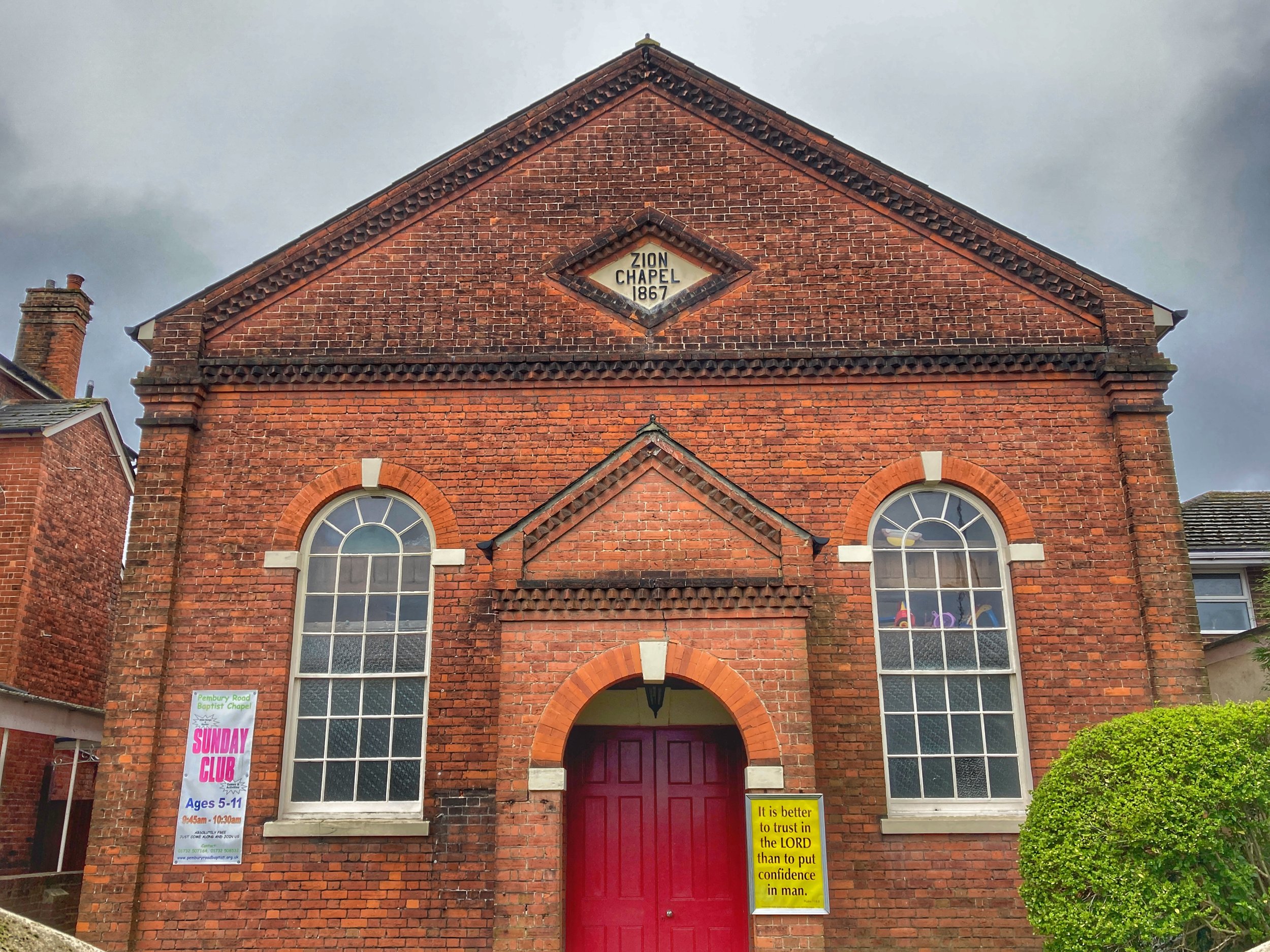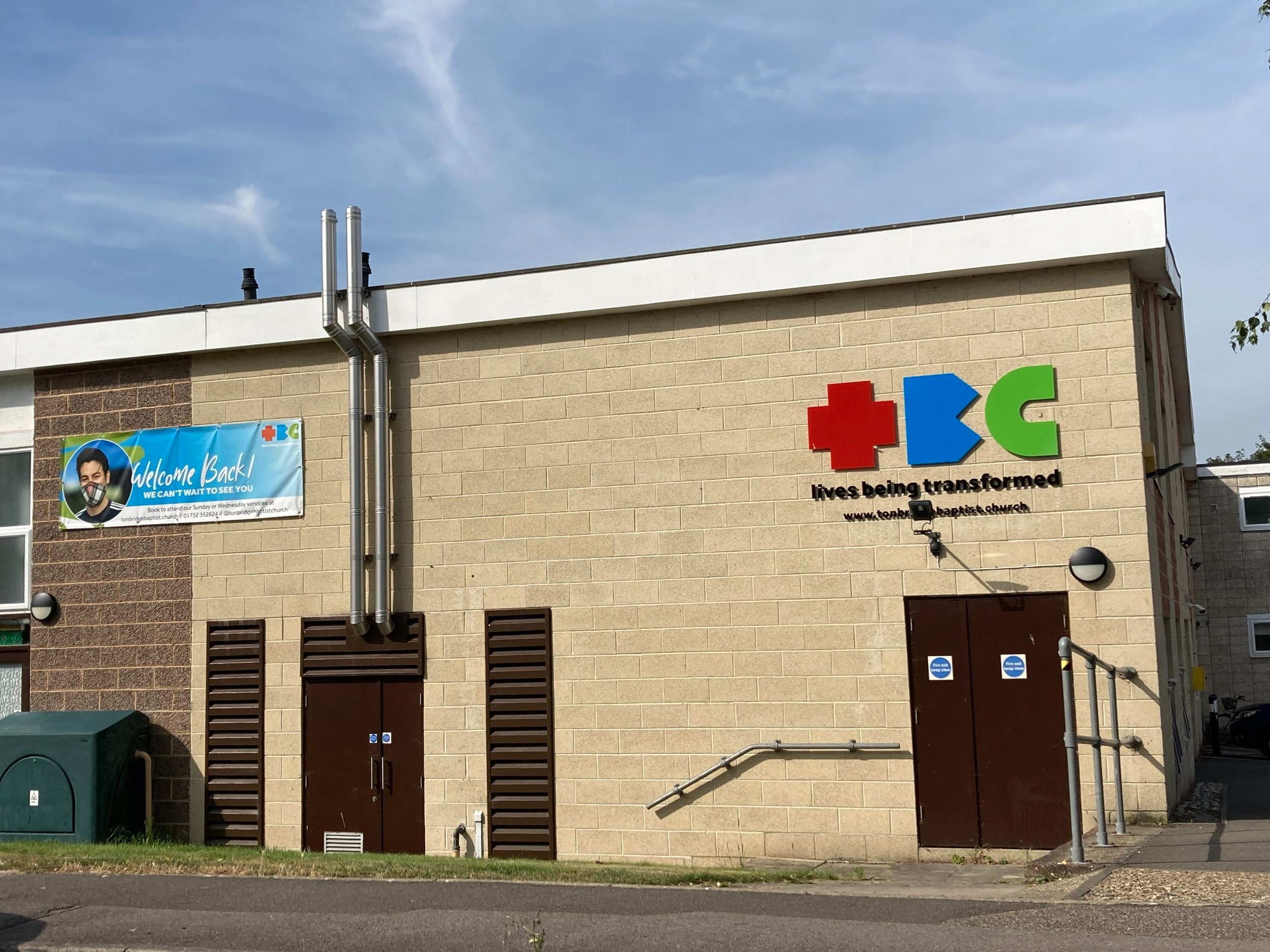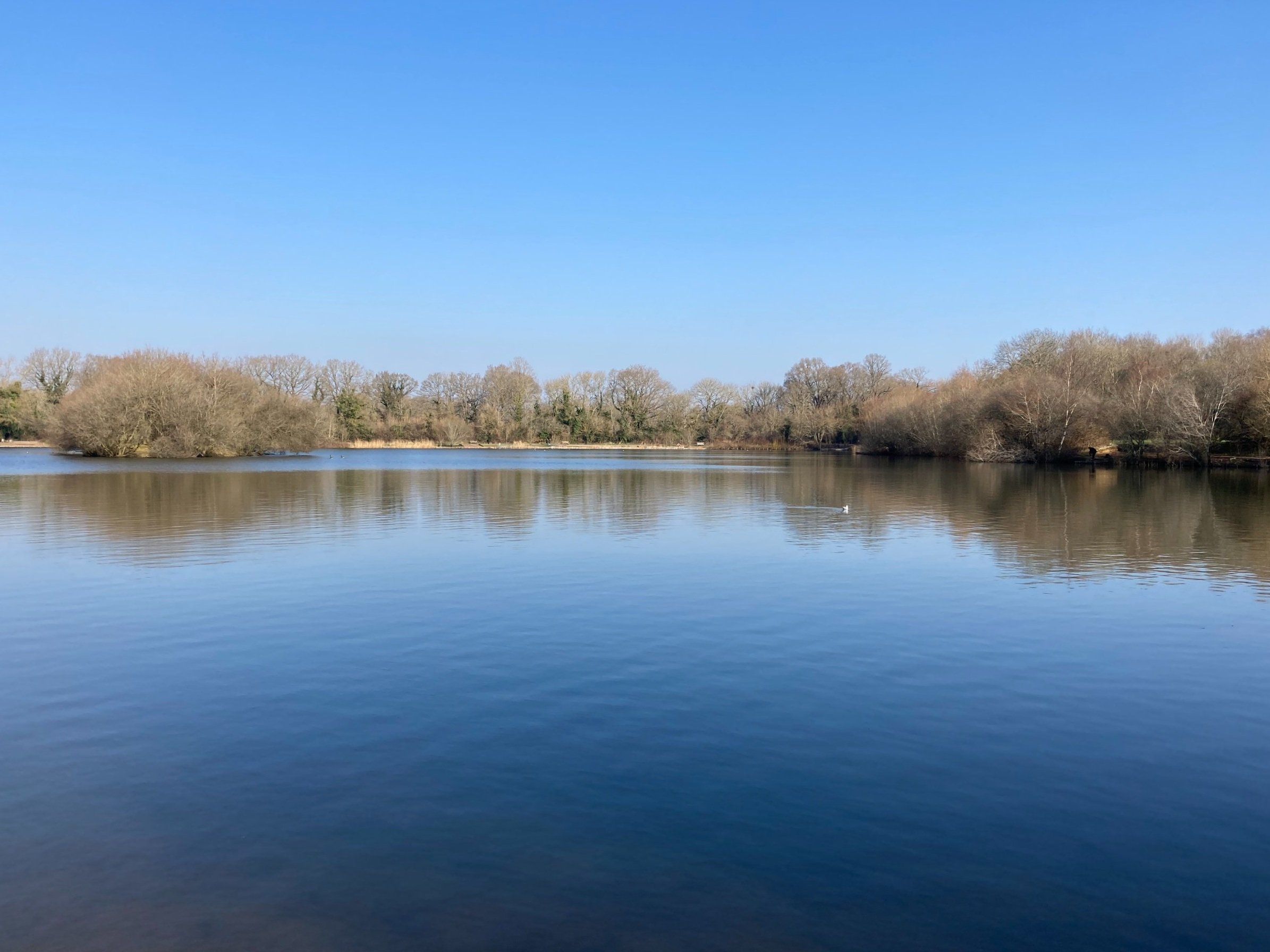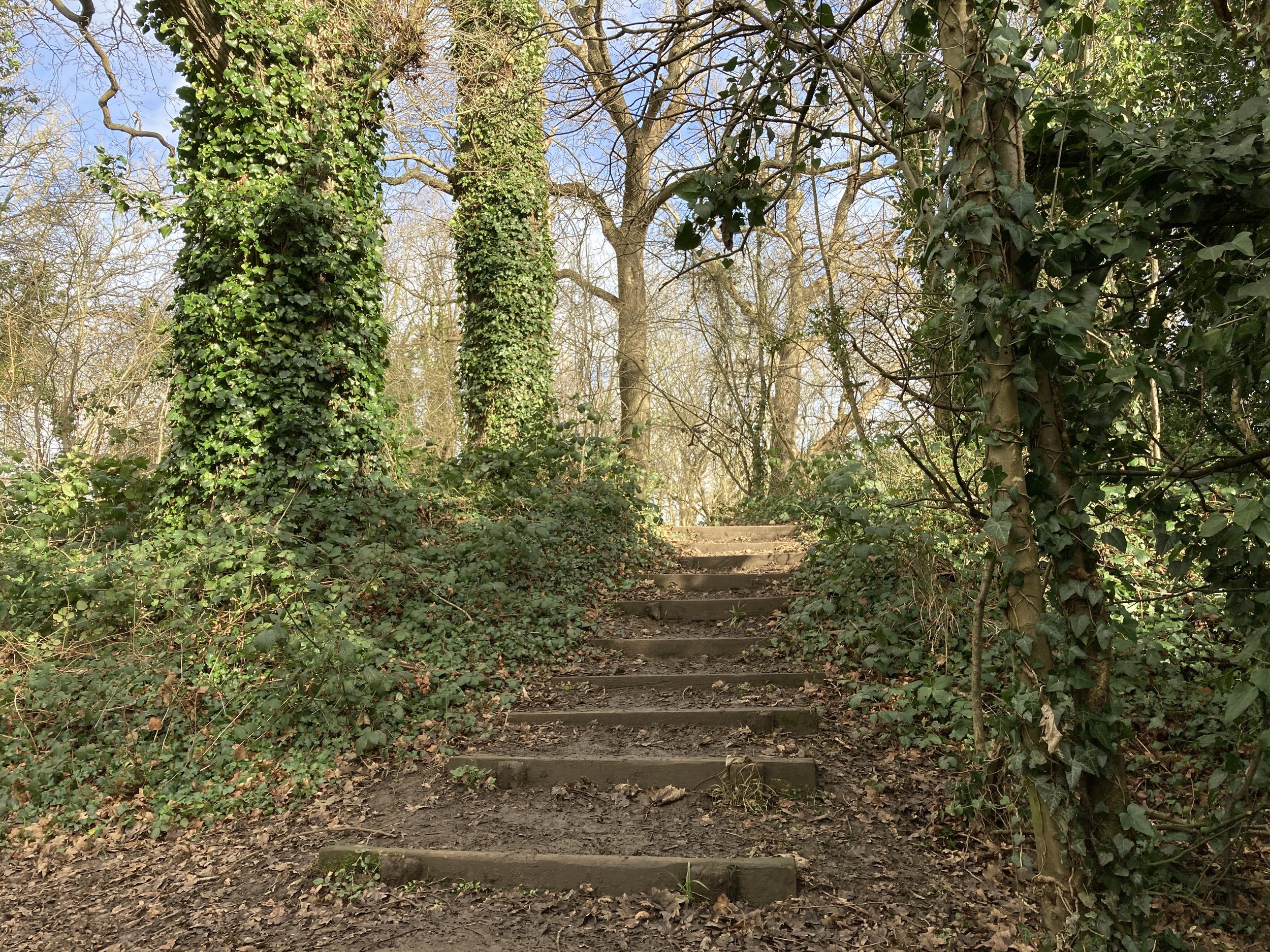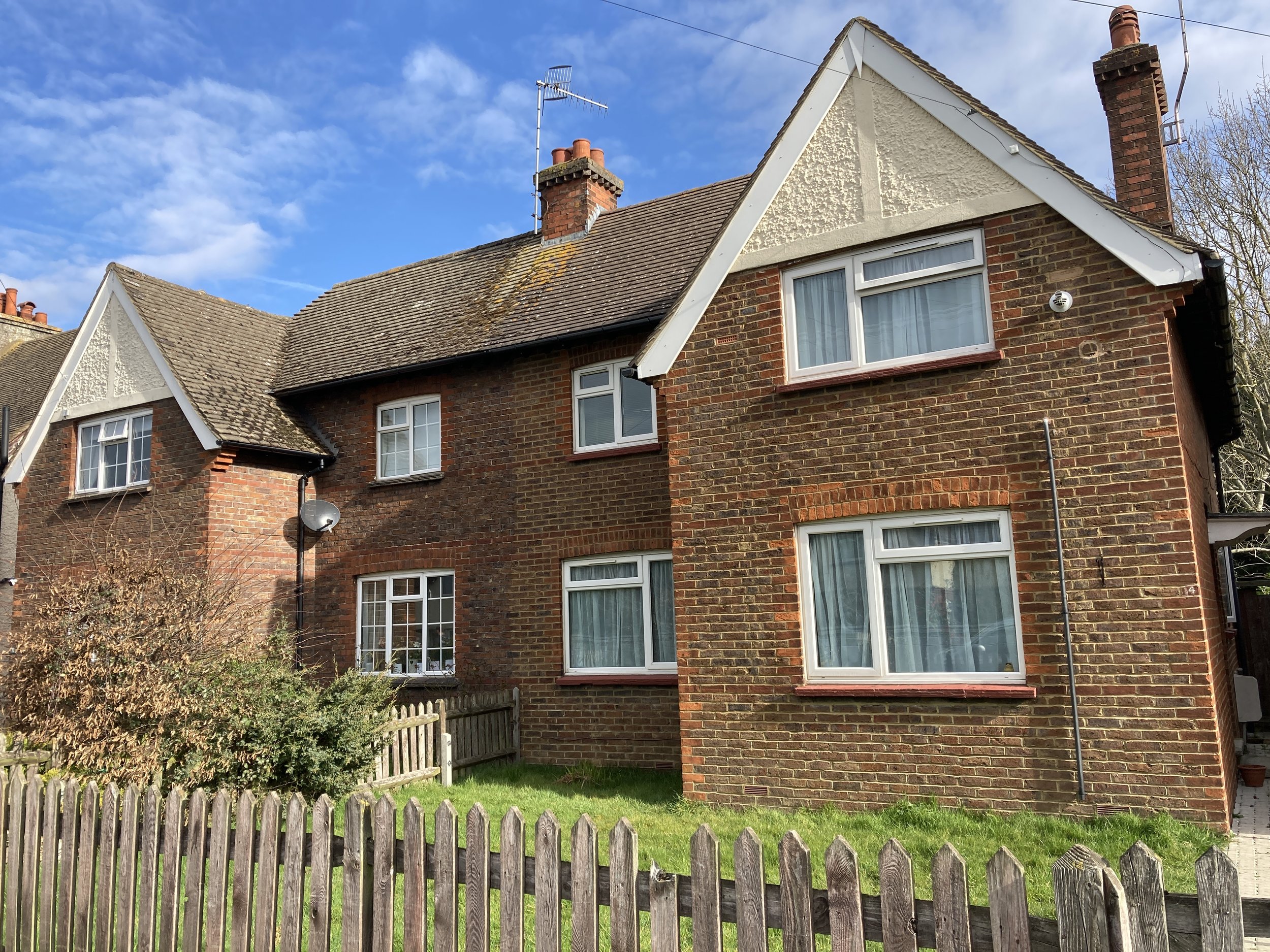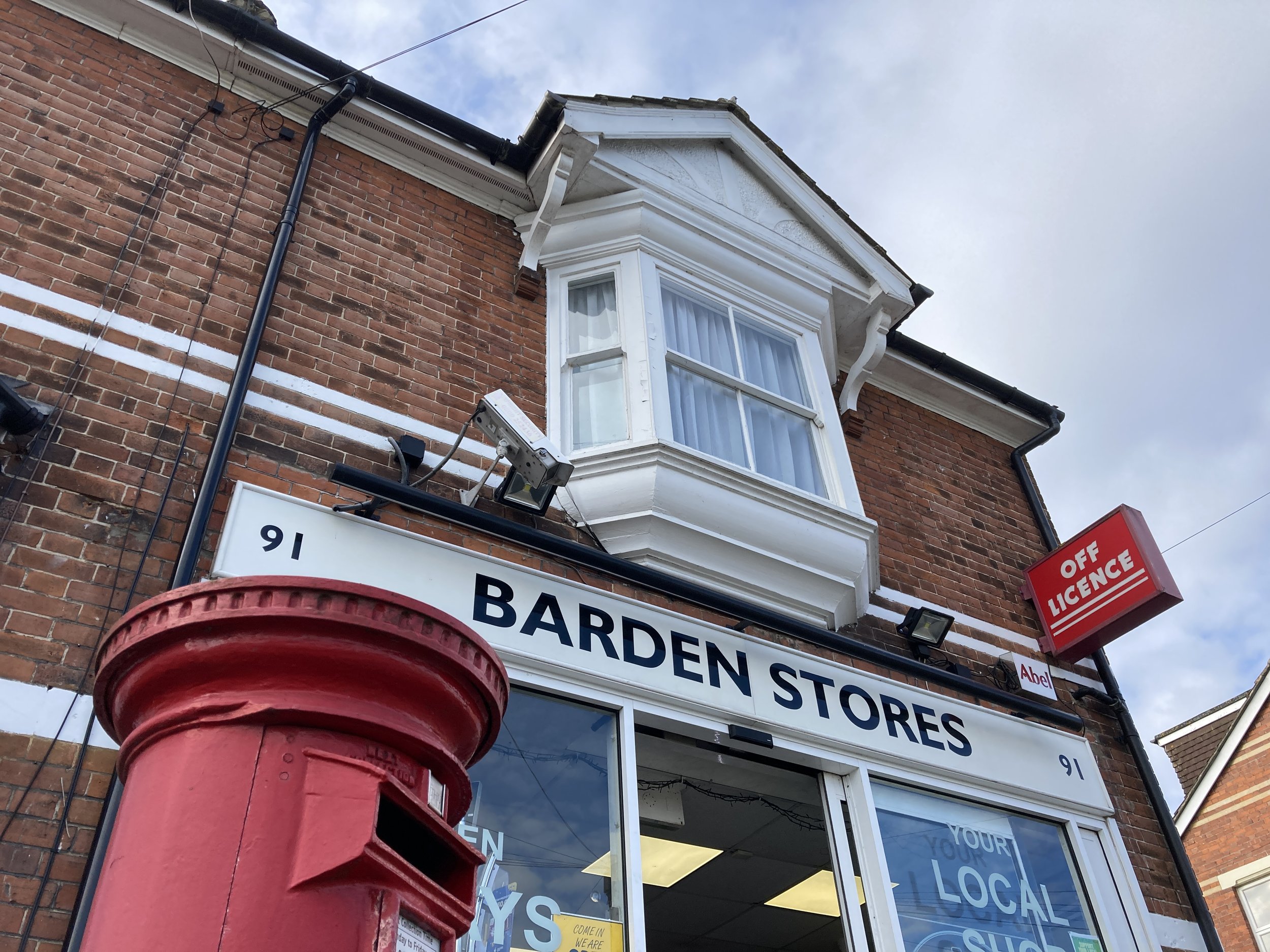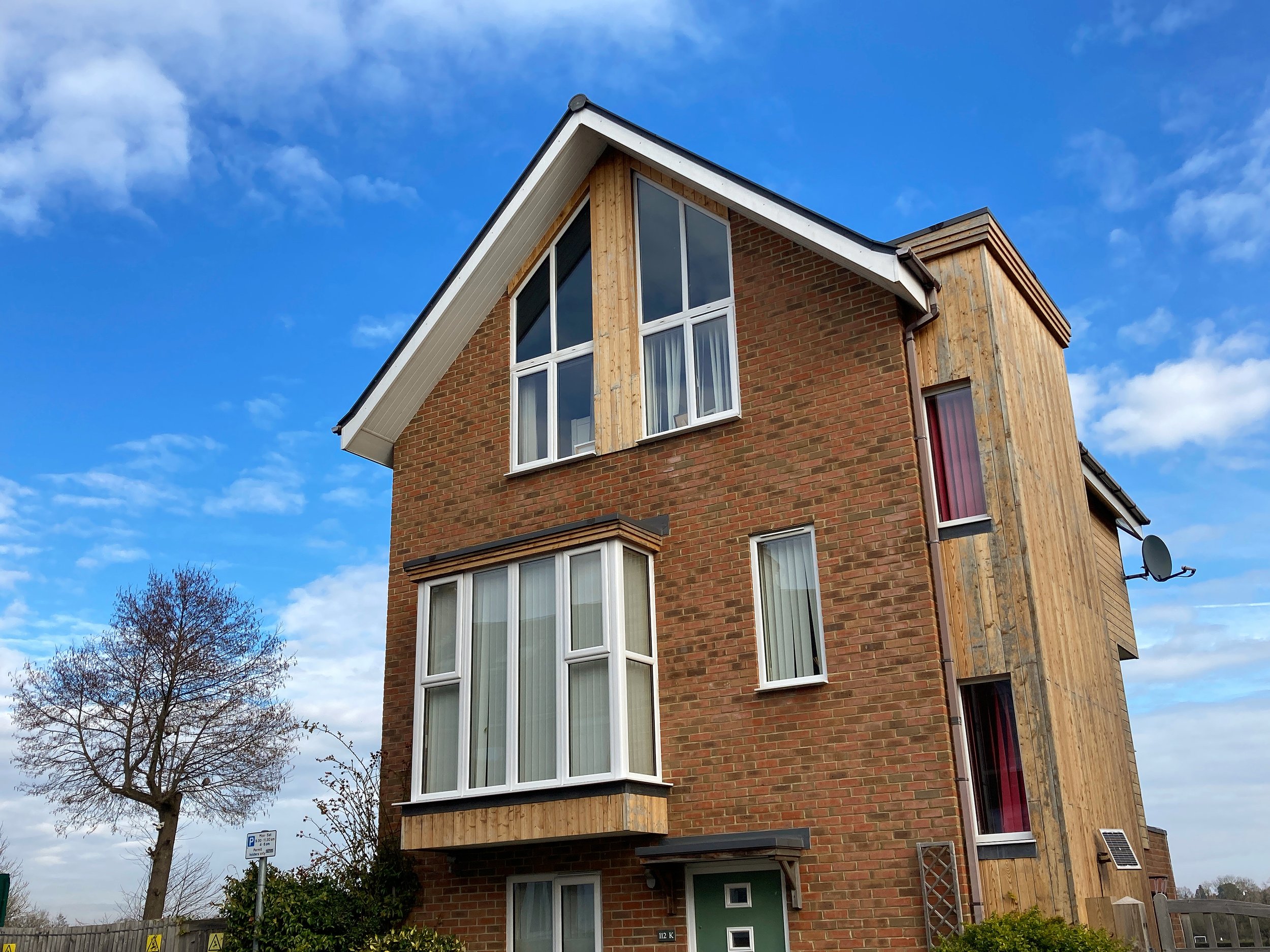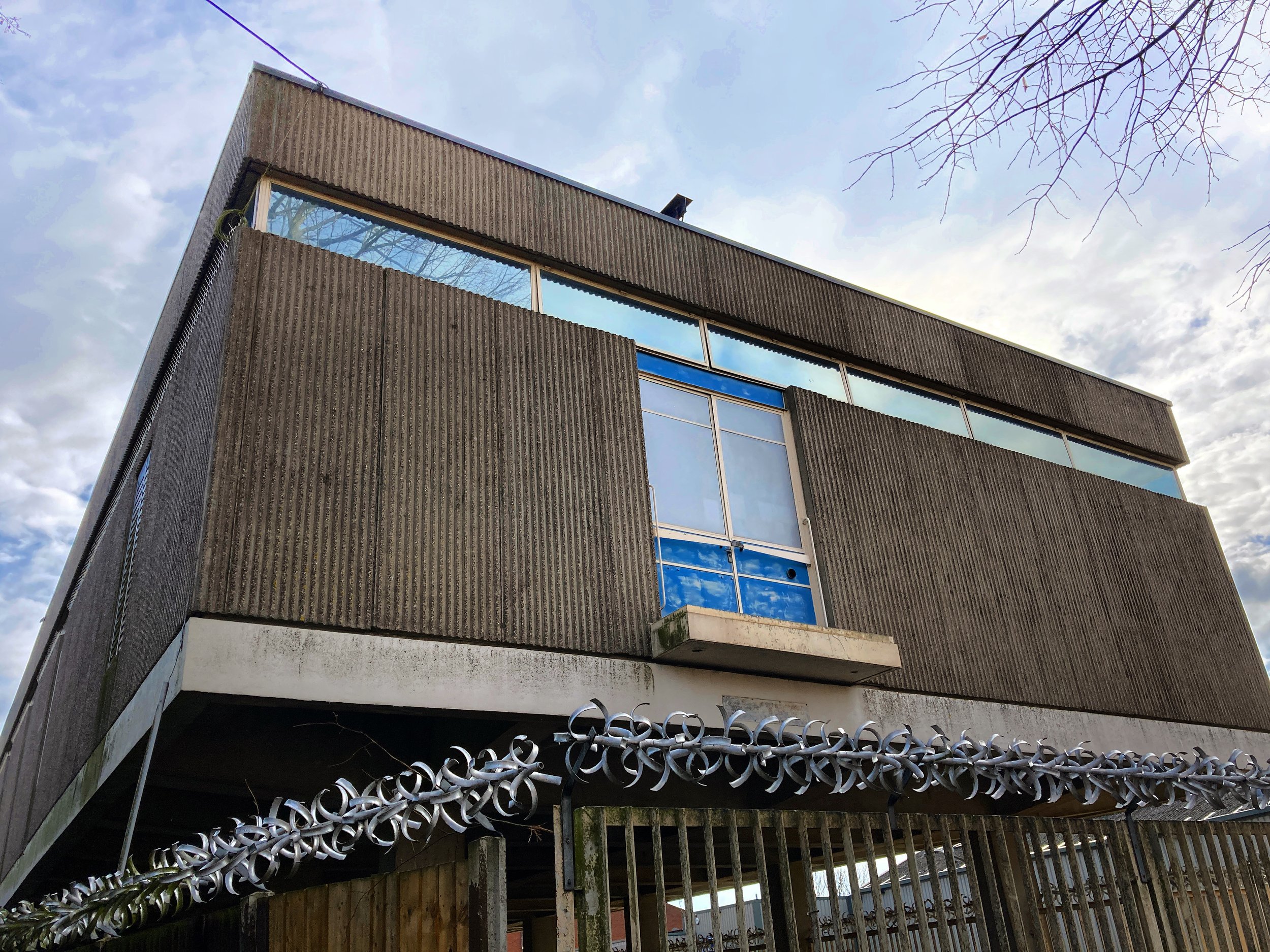Walk 24: Trainspotting

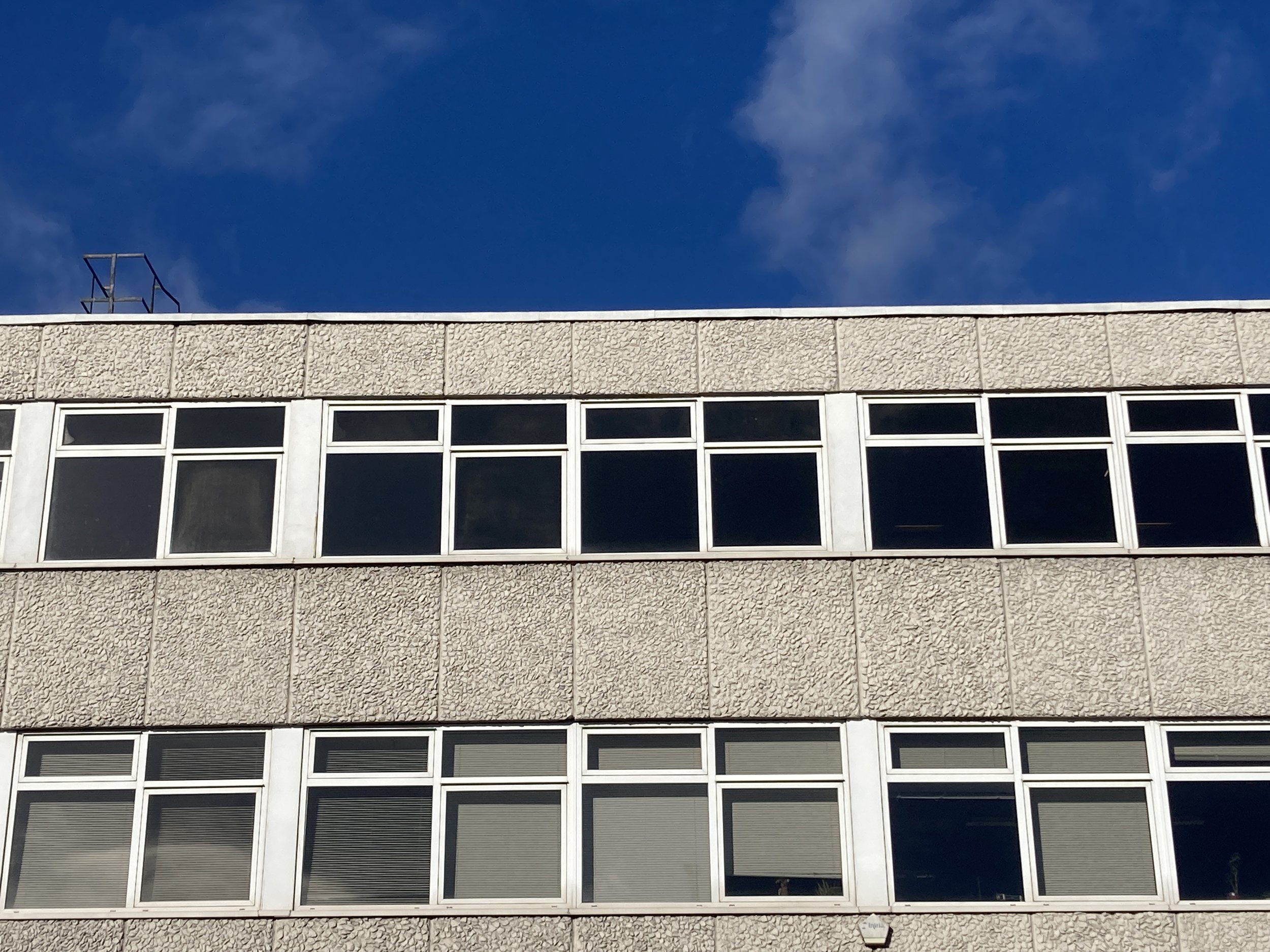
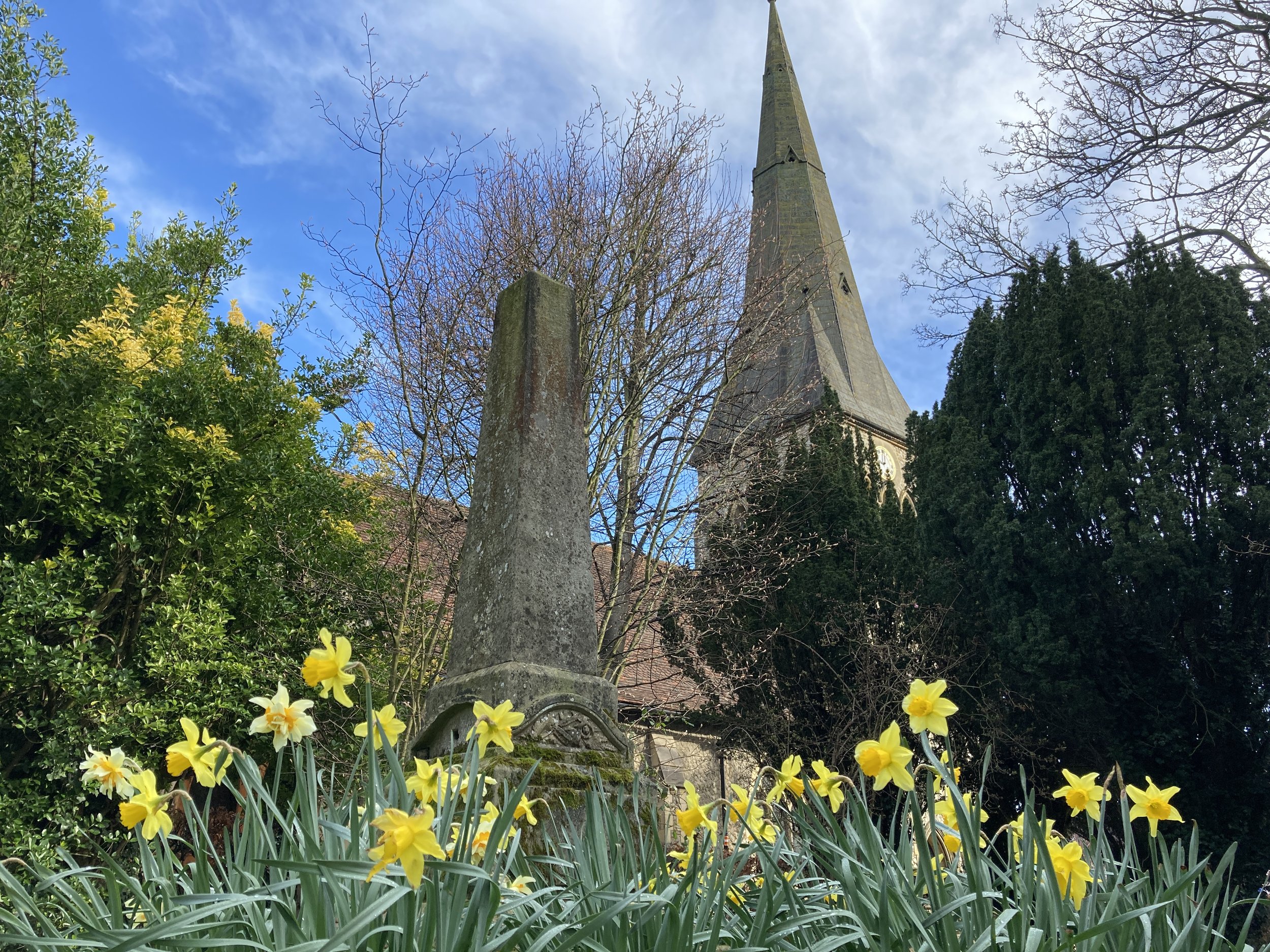
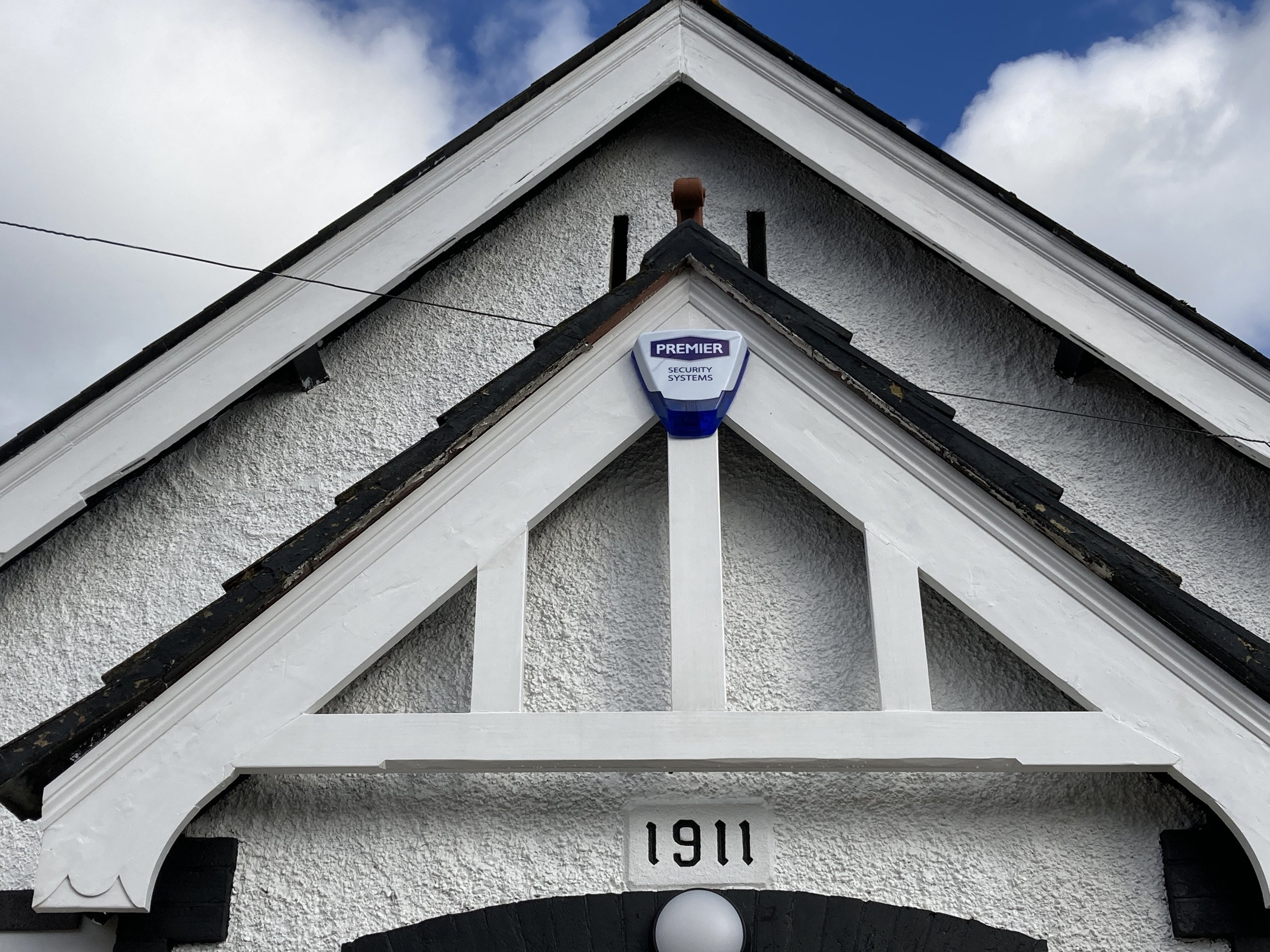
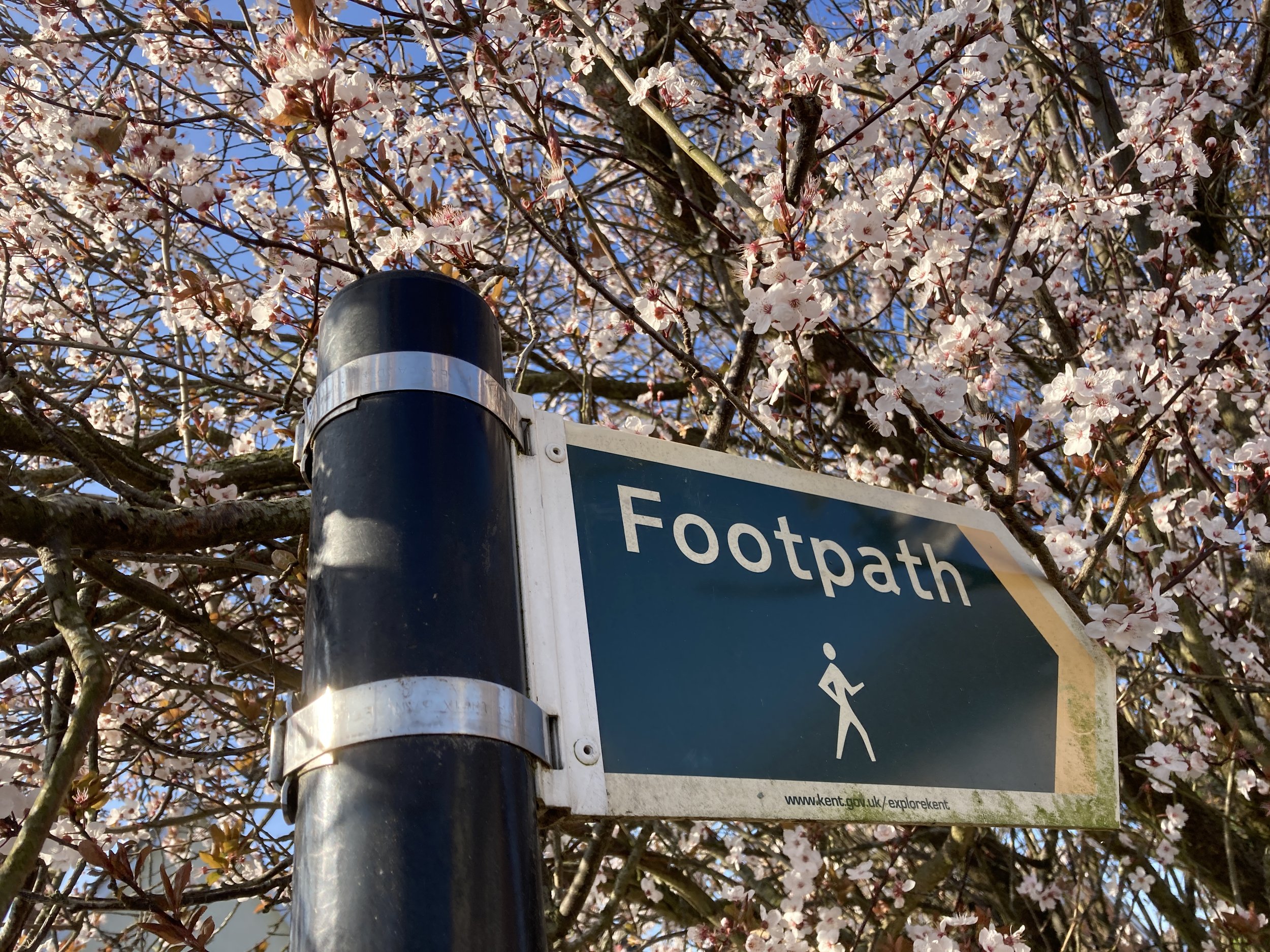
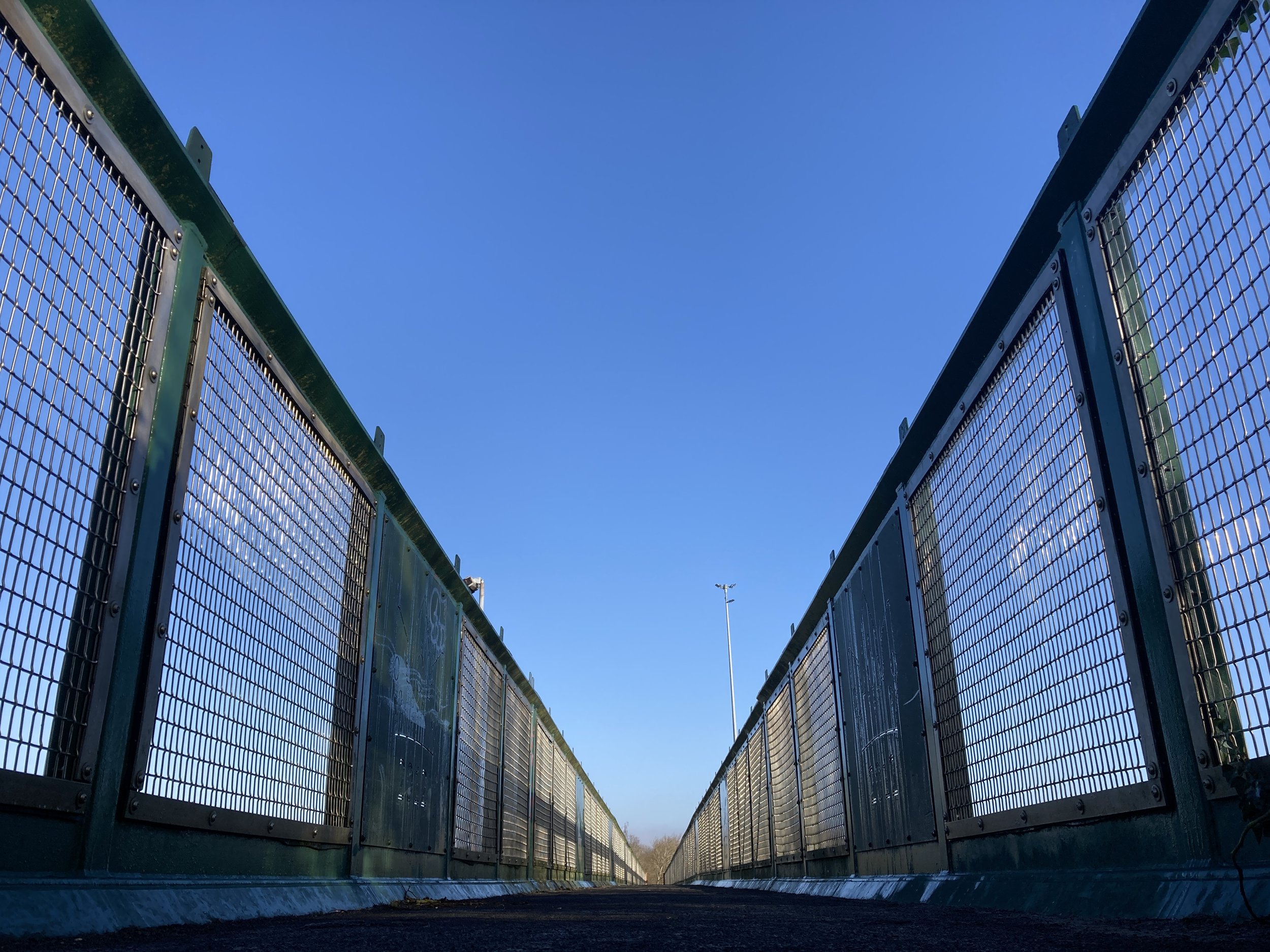
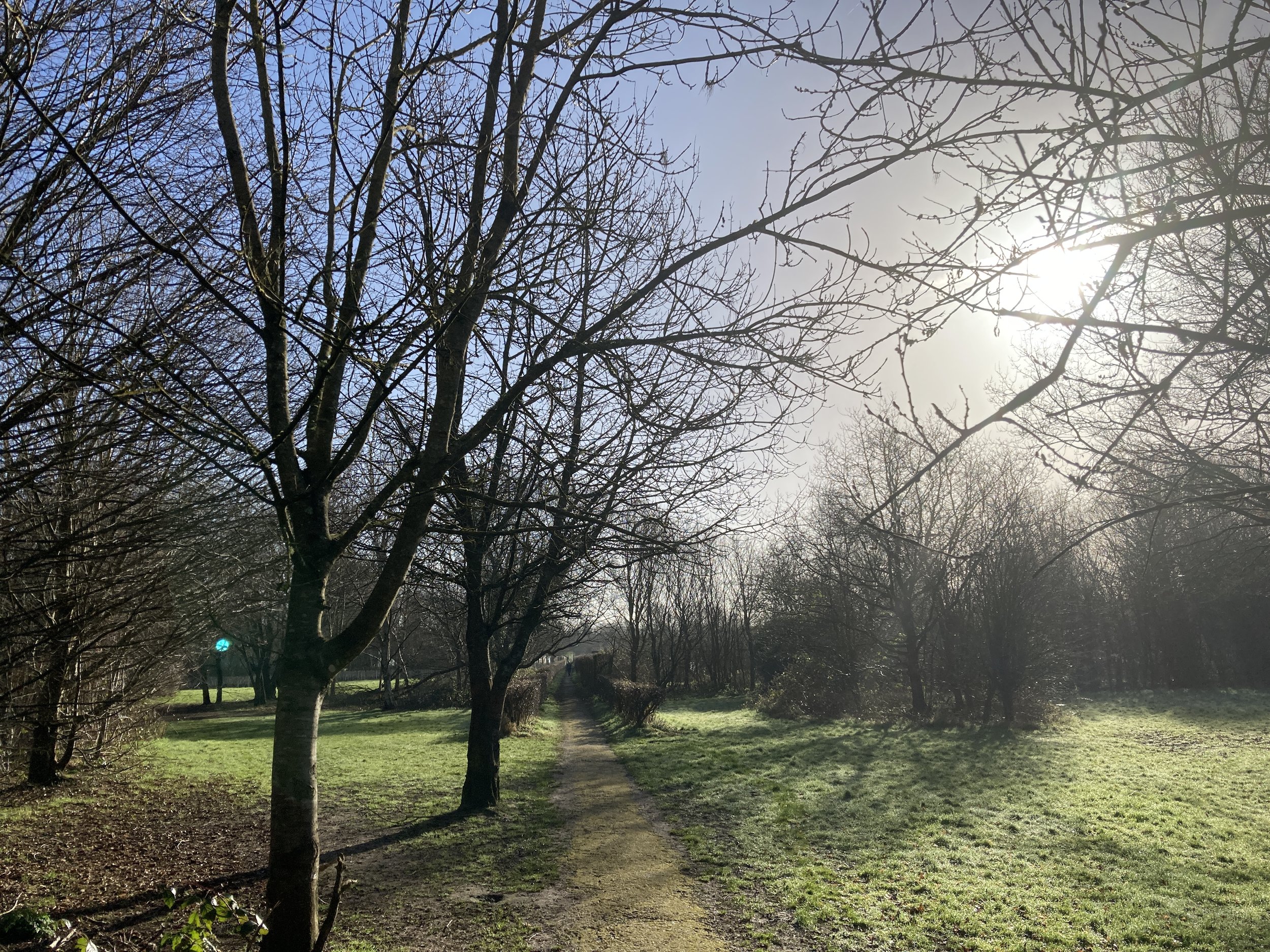

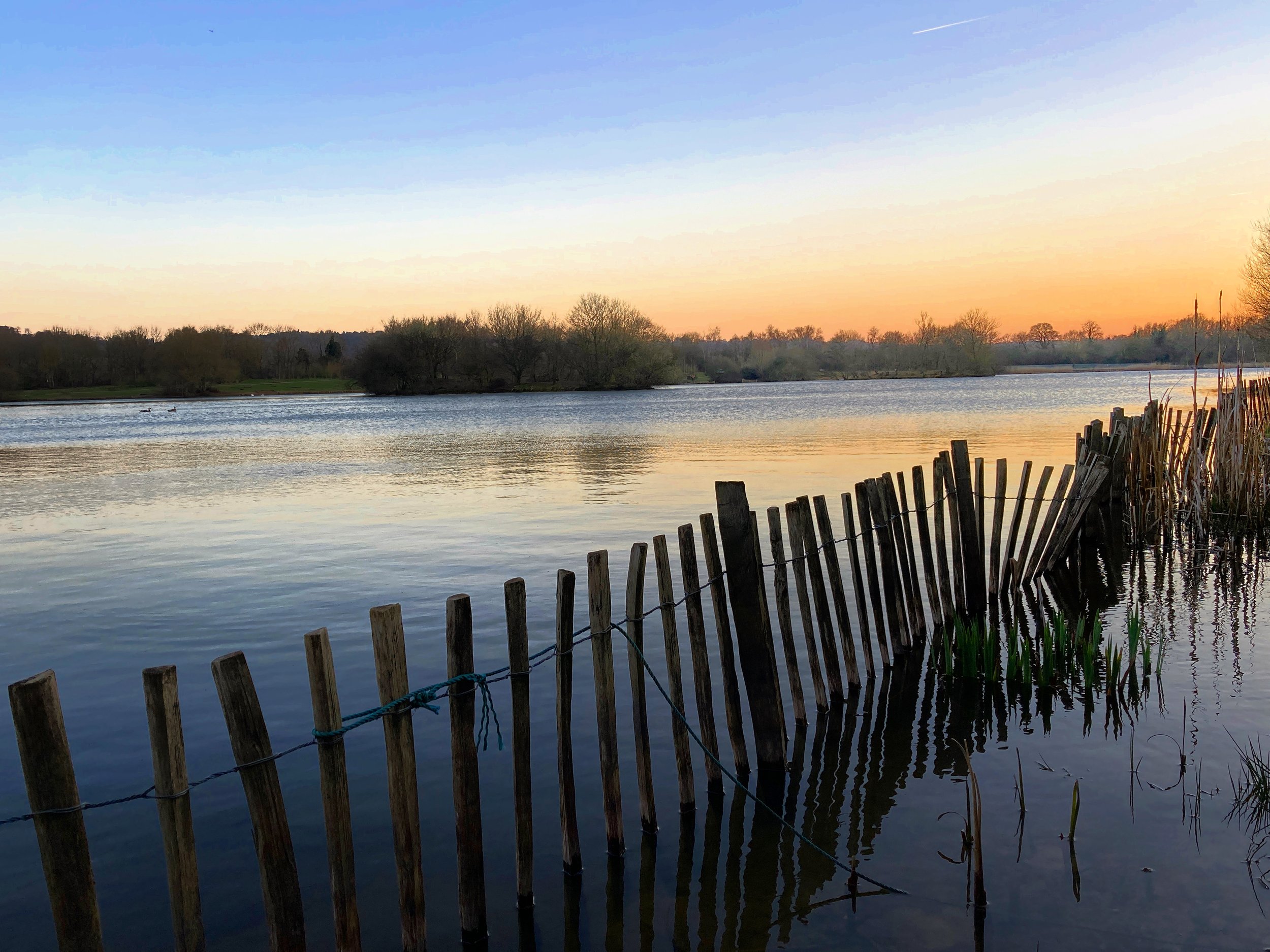
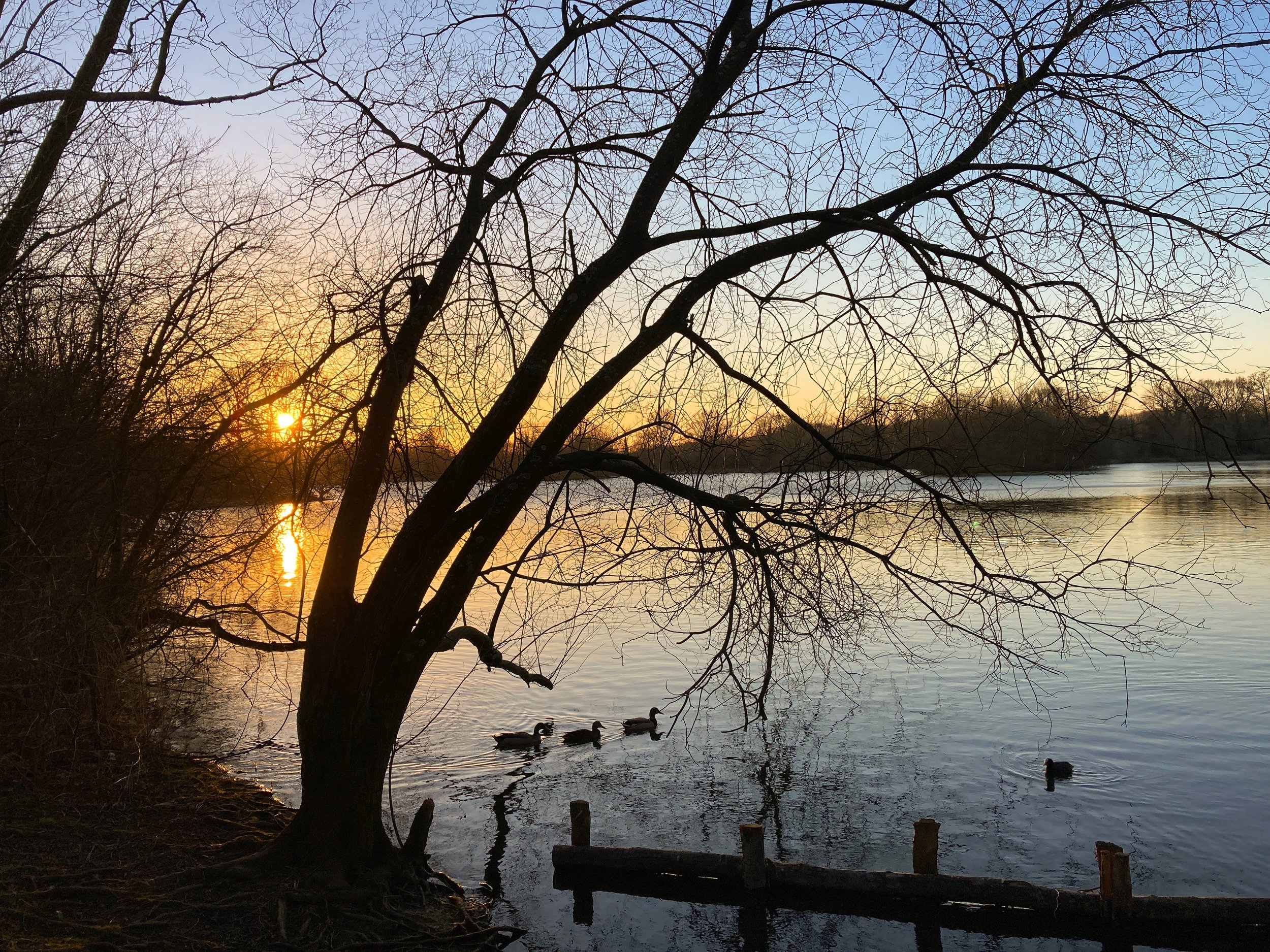
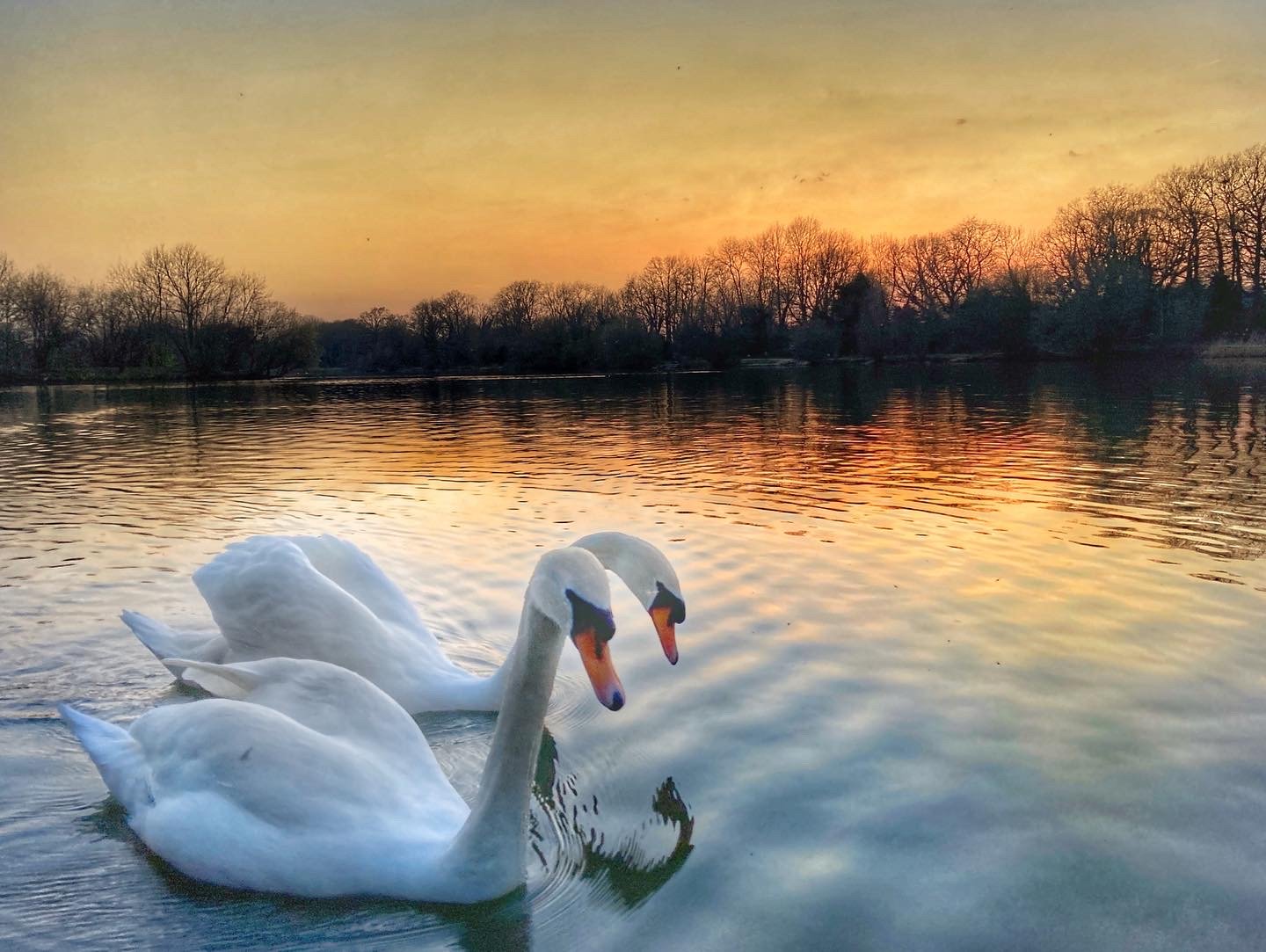
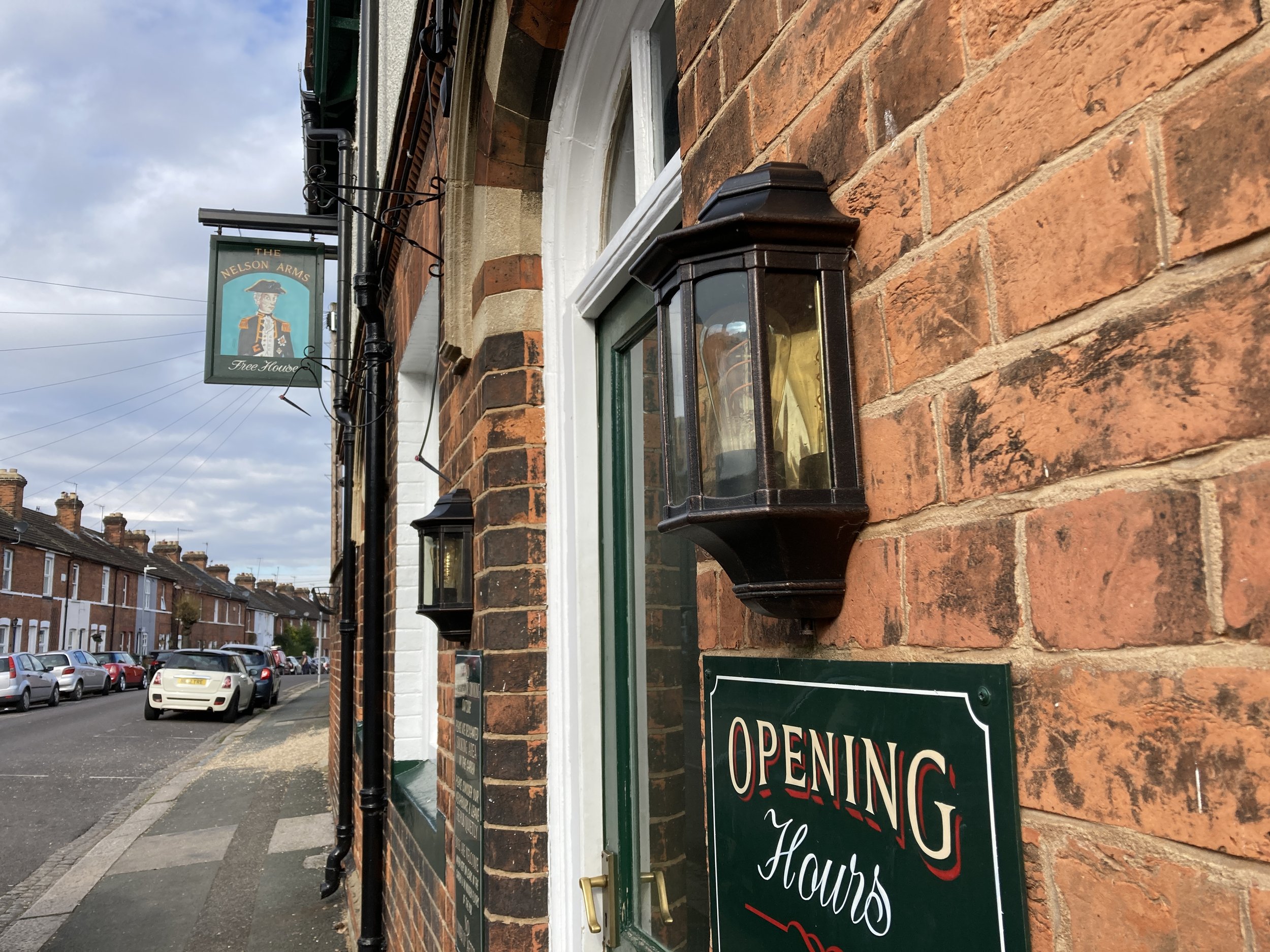
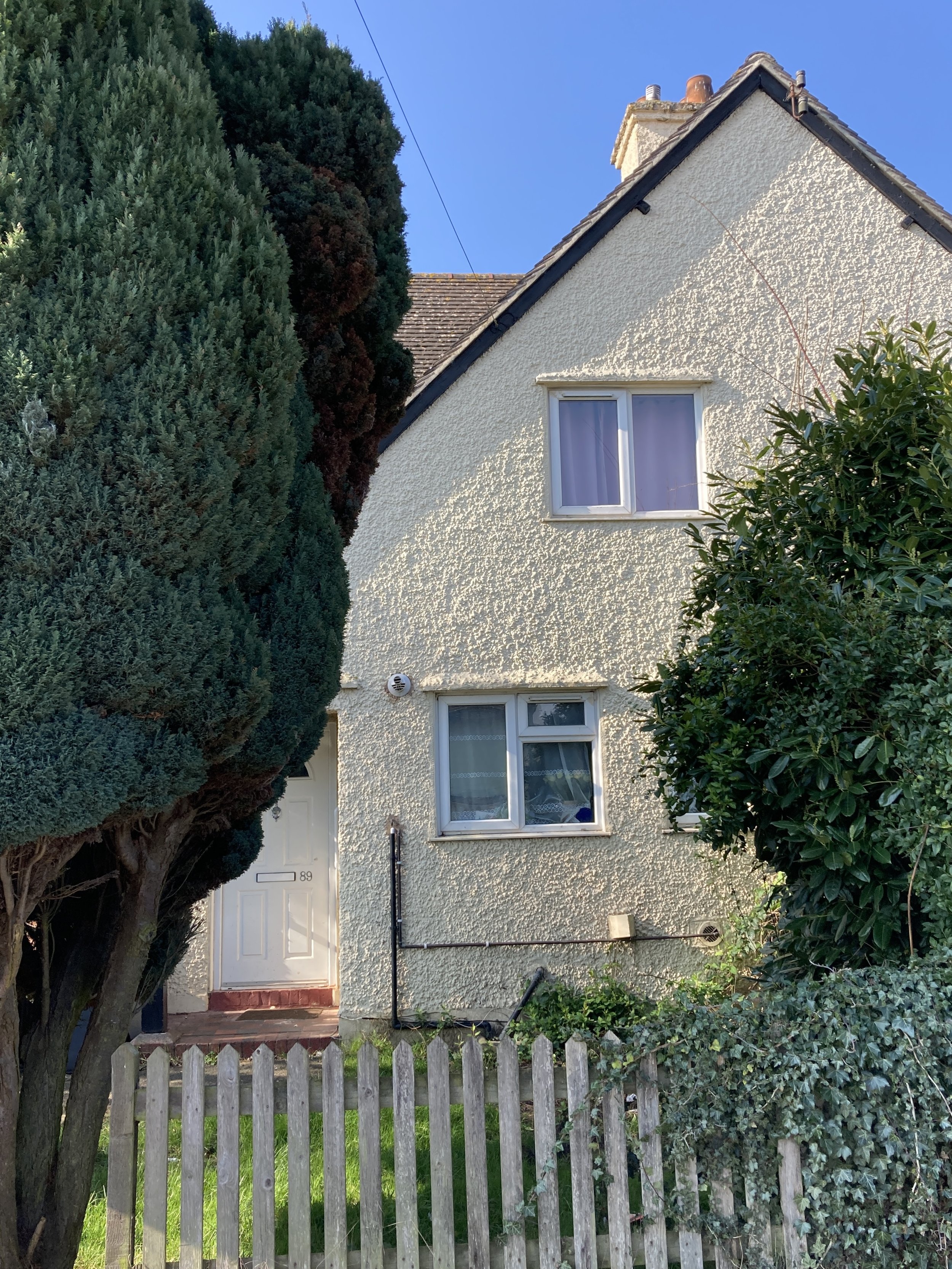
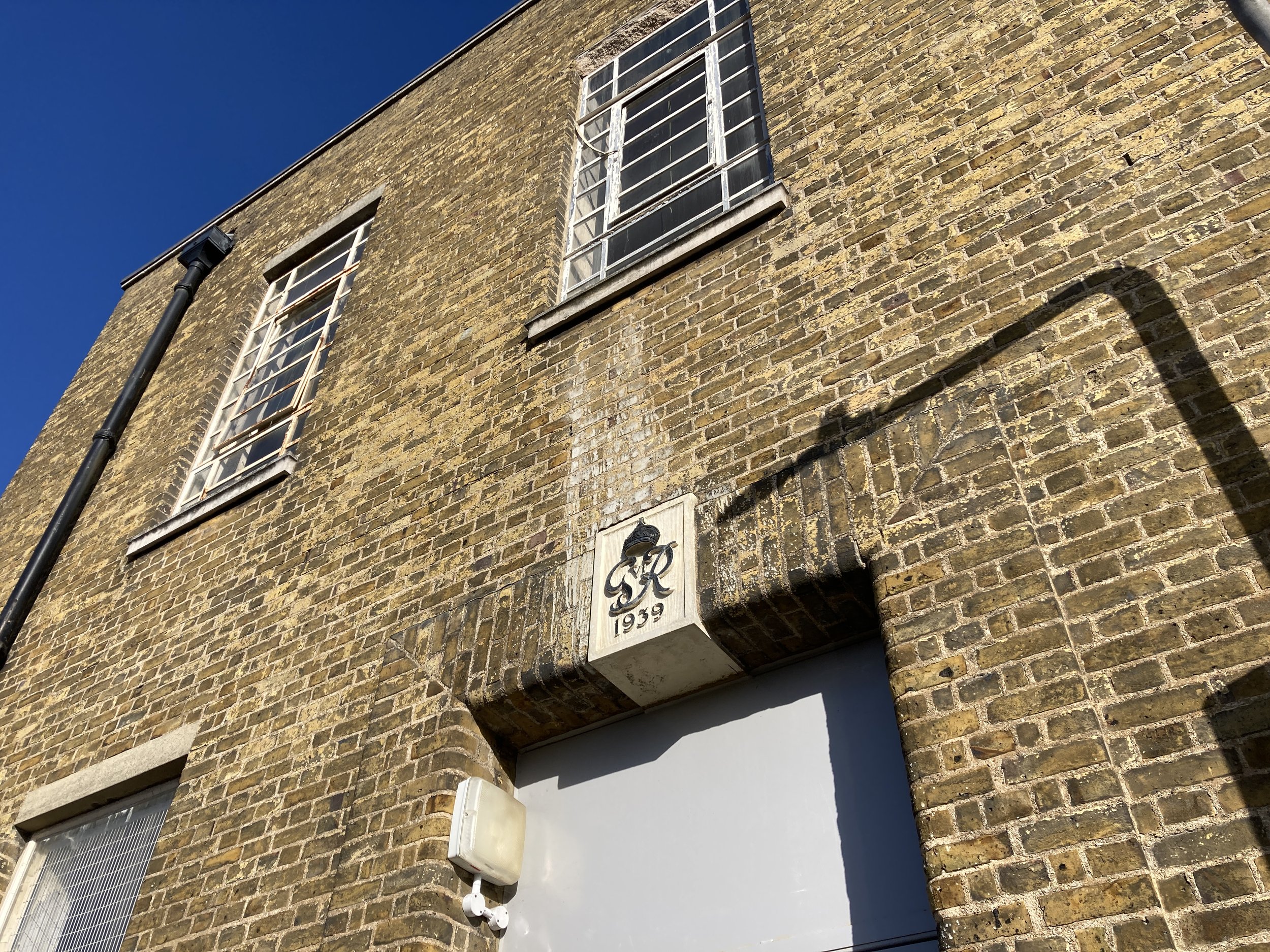

It was the last day of January and things were looking up for me. I had started a new job which I was loving and the sun was shining, hinting at the beginning of the end of a long winter. So far so good, until I felt that dreaded tap on my shoulder that I had managed to avoid for the last two years. Covid.
That night I was put through the wringer as my body responded to the virus. Each one of my muscles ached and my temperature spent the night soaring and plummeting. Thankfully that was the worst of it for me, but what followed was a very private lockdown as our family went into hiding.
Whereas the previous stay at home spells had given me the time and incentive to explore our beautiful countryside, self-isolation had taken away the daily walks which I had come to rely on for my mental health. Ten days at home was a small sacrifice to make, given the hardships and grief that the pandemic has brought to the door of other households, but it was a strange and at times frustrating period, as this time the world moved on outside our windows whilst we could only watch on.
When covid called…
As a care worker, there was a limit to how productive I could be from home, so my focus went into home-schooling, garden play and family movie afternoons. When the evenings came and the house fell quiet, I began writing this walk. I'd followed the route plenty of times before, so I knew it was tried and tested, but what I hadn't accounted for though was the vast amount of history and memories that this would excavate.
During those ten nights at home I ploughed through a stack of books lent to me by a kind friend and spent hours trawling google street view as I searched for clues from Tonbridge's past. As I pinged messages back and forth with my mate, we travelled back in time, uncovering stories from a different era.
Writing up these findings was a bigger task than I could ever have imagined, but it's been a fascinating challenge and one that has kept me busy way beyond those long days in isolation.
An isolation sunset
Begin your walk at Tonbridge Station. Turn right, crossing over the junction of Waterloo Road with care, then continue past the parade of shops that form the start of Quarry Hill.
Here you will find an eclectic array of small businesses, each breathing life and character into this otherwise nondescript 1960's block. I say it's nondescript, but this concrete cuboid holds a memory or two for me.
Growing up as a young boy, my Dad worked here, back when the offices were occupied by the Inland Revenue. One of his team was a man who was the owner of a serious model railway collection. I can remember a few times when Dad came home, laden with boxes of Hornby models that his workmate had gifted to us as he looked to find them a new home. His old colleague must have loved the view from this office. I can still vividly picture the the railway from the dizzy heights of the second floor, where Dad's desk was located. From up there it appeared like a scale model train set, running beneath the bridge and beyond. In those days the tracks were populated by the clunky blue and white slam door trains that made up the bread and butter of the British Rail fleet. Their yellow ends would slowly pull in and out of the town as the distant signals flicked from green to red.
Dad’s old office, Douglas House
Walk on, continuing past Salford Terrace. Nestled between a tattoo parlour and a chemist you may notice a modest town house with a blue front door. This was once the office of Colonel Stephens, a cult figure among rail enthusiasts, and the Godfather of British light railways.
Holman Fred Stephens was an ambitious young student, who had studied engineering at UCL before taking on a role as an apprentice for the Metropolitan Railway (now the London Undergrounds Metropolitan line). When the Met railway was commissioned for a new project in Kent, 22 year old Holman leapt up the chance to get involved and was awarded the position of resident engineer for the construction of the Cranbrook and Paddock Wood railway. The new branch line was a single track that ran between Paddock Wood and Hawkhurst, connecting up the villages of Horsmonden, Cranbrook and Goudhurst with the London-Dover mainline. With this project under his belt, Colonel Stephens stock rose as he was approached to create new railways at Rye, Selsey and then Bodiam, the first light railway to be created in Britain.
In case you are wondering, light railways were a transport initiative that was formalised in 1896 under the 'Light Railways Act'. The new law meant that railways could be built without having to jump through expensive parliamentary hoops to gain approval. The act was to make railways quicker and cheaper to build, with a goal of connecting up the rural areas that had been neglected by the larger rail revolution. Unlike the 'heavy' mainline railways which had to follow strict safety standards, their cheaper counterparts could be built with lighter rails and structures, reflecting their reduced capacity for both passengers and freight. The flip side to their flexibility was a maximum speed limit of 25mph (compared to the mainlines which averaged 40mph and could hit over 100mph!).
Colonel Stephens HQ at Salford Terrace
With its proximity to his fledgling railways and excellent mainline connections, Tonbridge was an obvious base for The Colonel. Initially he rented a house on Priory Road before making the short move to Salford Terrace in 1900. His new office was to be the nerve centre of his operations, it was here that he masterminded many more light railways - each of which he had a role in engineering, promoting and managing. The office accommodated up to 17 staff who could be found beavering away across three floors.
From his headquarters here in Tonbridge, he oversaw his empire of light railways, a collection of independent rail lines and networks that could be found all over the country. These ranged from the coal fields of East Kent, to the rolling hills of North Devon and Cornwall, and even as far North as the mountains of Snowdonia. The railways he created were often built and run on a shoestring budget - a reflection of their low passenger numbers and the unwillingness of the larger railways to finance them, due to the small if non-existent profits they made. The lines he managed were often served by secondhand locomotives and carriages as he demonstrated a masterclass in keeping the running costs on track.
The Colonel managed his networks with all the precision and discipline you would expect of someone with a military background. He had served in the territorial army for many years, which was where he obtained his rank. By all accounts he was a charismatic leader that was as dedicated to his employees as he was to his railways.
In addition to the 15 lines he had got up running there were just as many, if not more that he had designed, yet never got to the stage of construction, due to a lack of funding. One of these was the Hadlow Railway, a lengthy branch line that was to run from Tonbridge station, filling in the gaps that the existing mainlines didn't serve. According to Tonbridge Historical Society the route would have served Hadlow, before splitting and heading West to Plaxtol and East to Yalding. Had this plan come to fruition then North Tonbridge may have been built a lot earlier.
When he unexpectedly died in 1931, control of his operations passed to his trusty assistant, William H Austen, who manned the Salford Terrace office until his retirement in 1948. The end of Austen's own career coincided with the closure of the Tonbridge office and the introduction of nationalisation; a piece of legislation that was to sound the death knell for Britain’s light railways, as these were brought under government control. By the 1960's nearly all of the light railways had been closed to both freight and passengers, bringing an end to this era.
The charm of the Colonels' shoestring railways has not been lost on later generations though. Some of these, such as his Kent and East Sussex Railway, have been resurrected as heritage lines which continue to delight visitors to this day. There have been hundreds of books and magazines analysing his achievements, as well as a museum dedicated to his story and lifeworks. It might seem strange that there’s nothing referring to his legacy here, but fear not - The Colonel has a society dedicated to him who have celebrated his life by erecting a blue plaque for him at Tonbridge Station. If you would like to learn more about this fascinating character then their website is essential reading.
Colonel Stephens blue plaque at Tonbridge railway station
Continue along Salford Terrace and just after the last shop in the parade you will come to a sculpture honouring local resident and former olympian, Kelly Holmes. Dame Kelly surely needs no introduction, but in case you have just landed from another planet then here's a quick recap of her achievements and her connection to Tonbridge taken from one of my earlier walks.
Built to commemorate her double Olympic gold medal haul, this unusual statue rises above a roadside garden, greeting the traffic jams that crawl into town on weekday mornings. The abstract work was designed and created in 2017 by another Tonbridge resident and former Hugh Christie pupil, sculptor Guy Portelli. This is the second of his sculptures to grace Tonbridge, the first being 'The Torch' a poignant piece that can be found in the quieter setting of the memorial garden.
Beyond Tonbridge, Guy's sculptures and mosaics have been exhibited all over the world, gaining international recognition far and wide. You don't need to travel too far to see some more of his work though, as a collection of his pieces can be found at the Escape Art Centre, where he is currently artist in residence.
The Dame Kelly Holmes sculpture, created by Guy Portelli
Continue past the sculpture and then take an immediate right as you follow the brick paved path through the grounds of St Stephens church, a welcoming place of worship that is at the heart of the South Tonbridge community. When my little ones were littler we had the pleasure of coming here to see them perform their nursery nativity play.
Either side of the entrance to the church you will see a collection of little tombstones, marking the Punnet family vaults. If you are up on your Tonbridge history, or have read my earlier walk The Ascension you will know that George Punnet was a master builder that owned a number of the town's brickworks, as well as substantial amounts of land in and around Tonbridge.
When the railway came to Tonbridge, the local population rocketed and the Punnet family cashed in on the need to grow the town South of the river. As well as building hundreds of new homes, the Punnets found themselves bidding for the job of building a new place of worship to help ease the pressure on St Peter and Pauls.
The Punnet family graves at St Stephens church
A plot of land was secured in 1848 for £200 and then over the course of the next five five years, St Stephens was gradually built. When it first opened in October 1852, it didn't even have its iconic bell tower and spire - these weren't added until a year later, when a further whip round from the town raised the necessary funds to finish the job. I'm not sure who named the completed church, but whoever it was gave a subtle nod to Mr Punnet in doing so - St Stephens is the patron saint of bricklayers and stonemasons!
Walk through the church yard and then turn right, following the white railings down Waterloo Road.
In the shadows of the church you will see a brick building, embellished with diamonds and zig zags. This is St Stephens community centre, home to Steps pre-school by day and 'The Mix' a happening youth club that opens on alternate Saturday nights. This old property may be popular with the youngsters of today, but perhaps not so much when it first opened back in 1854. Back then, it was the first school in South Tonbridge, constructed to serve the growing new town. St Stephens school served both boys and girls, who were taught in separate classrooms.
St Stephens Community Centre, once a Victorian school
In an era when children could still legally be sent out to work from the age of 9, it was fair to say that there wasn't such a strong emphasis on the importance of a good education - particularly amongst working class families who often struggled to pay even the most modest of school fees (around a penny a week).
It wasn't until 1880 that schooling became compulsory for children aged between 5-10, but even then the teachers faced a daily battle to keep their pupils in the classroom. An old log book featured on Tonbridge Historical Society features the notes of an expasterated school master bemoaning the low attendance of his pupils stating 'children stay away for the most trifling causes, their excuses being most ludicrous'. This sounds Victorian, to the point of being a little dramatic, but when you read through the log, you can begin to see his point. Some of the many reasons listed for low attendance include a big storm, a circus coming to town, a number of boys picking up acorns, and the anniversary of Guy Fawkes!
These trivial excuses are the tip of the iceberg though, as like the rest of Victorian Britain, Tonbridge had it tough as the town tried to navigate its way through the endemics of the day. Cholera, scarlet fever and smallpox were some of the medical crises that the town had to learn to deal with- not made any easier by the typically unsanitary living conditions that the poorer sections of society faced.
Waterloo Road, Tonbridge
The girls school fared better though, with the number of pupils eventually increasing to the point that it moved to a new home on Pembury Road in 1871. The number of girls studying there had risen from an initial 54 to a total of 122. This figure shot up again when the 1891 education act was introduced, making education free for all for the first time. The impact of this act was clear to see, as by that point the school roll shot up to 258 pupils.
After a short spell above the library (between 1929-1936) the girls moved again, this time to a purpose built school, constructed as part of the new housing developments at Hectorage Road. The school lives on today, and is going stronger than ever, although it is now better known by its current name - 'Hillview'. The name was voted for by its pupils in 1968, though it's said that to some this was a running joke, poking fun at the gas, sewage and tar works that contributed to the vista!
Walk down the set of steps and then cross Waterloo Road with care before doubling back on yourself and turning right into Douglas Road.
Waterloo & Douglas Road, Tonbridge
The streets here were originally called the Blue Barn estate, but later went onto become better known Meadow Lawn, named after a sizable mansion of the same name that once sat on Waterloo Road.
A press clipping detailing an auction sale of the house's contents gives an eye popping insight into the size of the house and its owners wealth. The auction, which was scheduled for September 25 1867 was to include the contents of ten bedrooms and three dressing rooms.
The listed items had a whiff of the exotic about them, suggesting a well travelled owner or someone with cosmopolitan tastes - some of these included French iron bedsteads, his and hers Japanned winged wardrobes, and 'handsome' Brussels carpets. There were no Billy Bookcases in this part of town - everything up for sale was of the highest quality including 16 mahogany chairs and a further 12 walnut tree chairs - presumably as spares?! From the garden there was the option to bid for the cucumber frame, lawn mowing machine and 125 pots.
The riches and luxuries that oozed from this mansion were a world away from the slums and flop houses that were typical of life for many in Victorian Tonbridge, despite being just a few short hundred metres across the tracks.
Less than thirty years later Meadow Lawn itself was put up for sale, along with its stables and outbuildings. All were to be auctioned off on the condition that the buyer would demolish these in readiness for the construction of the new estate. In a time when green spaces were being given away with abandon, this was one of the later areas of Tonbridge to be developed. Its first houses were constructed in 1901 and were built to serve a new factory that had opened at the end of Douglas Road, we'll come to that later on in the walk though.
A mix of architecture on Douglas Road
As you continue along Douglas Road the attentive amongst you may notice a mismatch in the age and style of the housing that populates the surrounding streets. One example of this is Meadow and Lionel Road, where the original Edwardian houses faced onto a communal green space, which was later filled in with more dwellings as the demand for new houses grew.
The architectural styles of the houses vary, but the knobbly trees which line the pavements of this neighbourhood add consistency to the area. During our Walk Tonbridge Festival, some of these were decorated by a creative band of local residents. The 'Magic Forest' proved to be a talking point that showcased what can be achieved when a community comes together. You can view some pictures of these and find out more about the festival here.
The history books suggest that community spirit has always run deep in this part of town - for example during WW1 residents of Meadow Lawn dug deep to help support the influx of Belgian refugees that found themselves in Tonbridge.
‘A thousand paper cranes’, part an art installation by local residents for our 2021 Walk Tonbridge Festival
An estimated 250,000 Belgians came to Britain after fleeing their homeland from the invading German army. The refugees were dispersed all over the country, including here in Tonbridge. Local residents offered up rooms in their houses and space was made at the library to provide a communal space for the Belgians to catch up on news back home and make contact with friends and relatives.
In Tonbridge local people formed committees that would raise funds to help with their welfare, with many residents seeing this as a way that they could help support the war effort. One Belgian family lodged at Meadow Road, where they stayed until 1919, supported by the good people of Meadow Lawn. It's said that when they left the neighbourhood locals rallied round once more, sending them home with farewell gifts. You can read all about this chapter of Tonbridge history in 'Military Matters', a superb book by my mate Pam Mills & John David Swarbick.
Continue along Douglas Road and you will see the Hope Church on your right. Built in 1910, this was originally known as the Evangelical Free church. It was built as a permanent home for a congregation of seceders that had parted ways with the town's baptist church. It is one of many non-conformist churches that sprung up in Tonbridge during the Victorian/Edwardian era.
Hope Church, Tonbridge, one of the towns non-conformist churches
The development of the new churches coincided not just with the town's population growth, but a nationwide relaxation of laws which had previously restricted minority religions that didn't conform with the beliefs of the Anglican church. Although the non-conformist worshippers had been permitted to congregate, outdated rules meant that they could not legally be married or christened unless the ceremony took place in a Church of England following the traditional anglican rites. Marriages or christenings that did take place 'underground' were not legally recognised, further undermining the status of these religions. The non-conformists also found themselves marginalised by legislation which prevented them from standing for public office, teaching in an English university or even studying for a degree, forcing some church goers to choose between their career and their religion.
Throughout the Victorian age these outdated laws were slowly repealed, giving a new found freedom to the minority religions. The churches gained further independence in 1844 when a new bill was passed, legally permitting their worshippers to own the buildings they had built, rather than just occupy them. These moves gave the non-conformists the legitimacy and freedom they had been denied for so long, hence they later became known as ‘free churches’.
In addition to the church here at Douglas Road there were a further 9 chapels, tabernacles and churches built in South and Central Tonbridge between 1857-1898. The new buildings served Methodists, Baptists, Congregationalists, Evangelists and Wesleyan worshippers. This trend was repeating all around Tonbridge as similar free churches popped up in surrounding villages such as Hildenborough, Dunks Green, East Peckham and Hadlow.
Despite a steady decline in the number of churchgoers in the UK, many of these places of worship are still present and serving an active congregation. Others have closed over the years and found new life as unusual residences or offices. A few were even lost altogether after falling to floodwaters and the ravages of time, only to be rebuilt in new parts of town.
Proceed along Douglas Road as you head towards Sussex Road. This section of the route forms part of our daily school run. On a good day, we find ourselves running with the crowd, joining the throng of excited children and agitated parents, hurrying to make it in time for the opening of the gates.
Parents and children have been making this school run since 1907. When Sussex Road Primary opened, it joined Slade as one of the town's first council owned schools. Up until this point, all education had been arranged privately or under the guidance of the churches, such as St Stephen's school which we walked past earlier.
Sussex Road Primary school, the first council run school in Tonbridge
Similarly to the new Meadow Lawn estate, the school had a working title of 'The Blue Barn new school', funnily enough this didn't catch on and when the school opened its doors in January 1907 it did so under the name of 'Sussex Road Elementary School'. Back then the school was broken down into two departments - the infants and the juniors. The infants school taught both boys and girls up to the age of 8, with the different sexes taught separately.
When the infants graduated to juniors, the girls made the short journey across the playground to Sussex Road Junior school, whereas the boys headed North to The Slade, which had its own junior school for boys. Both junior schools would educate their pupils up to the age of 11, after which the girls would continue their studies at one of the burgeoning senior schools (such as Hillview or County Grammar - now Tonbridge Girls).
After their Junior schooling most of the boys would have found themselves returning to Sussex Road, where there was once a senior school located just across the road. This school later went on to become The Hayesbrook school, who despite building a new school on Brook Street, continued to share this campus with Sussex Road until 1999. When the site was sold to developers, the new builds at Copper Beech were constructed and the primary school ploughed its proceeds from the sale into extending the current school.
Sussex Road school, Tonbridge
Although the original building still forms the nucleus of the school, life at Sussex Road would be unrecognisable from its beginnings 115 years ago. In those early days, the school was heated by smoky coal fires and lit by potentially explosive gas lamps, a far cry from the bright and colourful classrooms that I have become accustomed to visiting over the years. As ancient as it makes me feel writing this, the chalk and slates that the infants used back then were probably a bit more relatable to my own early years education than the led screens and PowerPoint presentations that my 10 year old daughter and her classmates have become accustomed to!
Cross over Sussex Road and continue down the alleyway opposite the school. This passageway snakes its way between the back gardens of the two newbuild estates that have been tacked onto Meadow Lawn in recent years. The more recent of these, as we have just learnt, replaced the old school buildings, but the other, larger development to your right was once the site of Brown Knight & Truscott, one of the town's historic print works.
As with many newcomers that have been drawn to Tonbridge over the years, BKT were also attracted to the town by its relatively close proximity to London and its excellent rail connections. The company were already well established in the big smoke, having been formed from a merger of three of the city's leading printers; Charles Knight (incidentally the first British printer to use steam), William Brown and a young Cornish man, James Truscott.
An aerial shot of the old print works at Douglas Road (Pic: Historic England)
When they expanded their operations to Tonbridge, the Dowgate print works became the driving force behind the growth of the Meadow Lawn estate. The new factory needed homes for its workers, who in turn needed a school for their children and a church in which to worship.
The Dowgate works expanded in the 1940's, after BKT's original London factory fell foul of Hitler’s blitz. The damage was so severe that the firm were forced to relocate all of their operations to Tonbridge. You only need to look at an old photograph of the works below to grasp the scale of the operations here.
Despite being promoted to the flagship branch of BKT, this was just one of several large factories in a town that had by now become famous for its printing. Just off the High Street on Medway Wharf Road, was the Whitefriars press, there was also the Crystalyte works off Cannon Lane and then in North Tonbridge was the Peach Hall print works- this was in a time when Trench Wood was still a wood and Cage Green was a little greener.
Each of the printers specialised in a different product, so there wasn't direct competition between them. For example BKT printed stationery, whereas Whitefriars focused on magazines and Peach Hall produced books - lots and lots of books. It is estimated that the printers employed around 1000 people - a fair few when you consider the population of Tonbridge was only 16,000 at the time!
The old print works captured from the railway line (Pic: Pam Mills)
The Dowgate Works were the last of the printing giants to leave Tonbridge, having sold up and moved in 1988. When BKT left town, the factory and warehouses that Meadow Lawn grew up around were demolished and replaced with a new batch of housing that has added another layer of history to this community. If you would like to read more about the history of the print works in town then I would recommend this piece by Tonbridge Historical society.
Follow the alleyway past the playing fields and then eventually you will come to a flight of stairs. This is the closest you will get to a hill on this walk, but nonetheless the view at the top is as rewarding as some of my previous more strenuous climbs.
At the top of the stairs you will come to the jubilee footbridge, a 110 metre catwalk that offers up panoramic aerial views of the railway lines and sidings that form Tonbridge West yard. To many locals this is a practical shortcut that forms part of the school run or daily dog walk, but in trainspotting circles this has a legendary reputation. You only need to run a cursory google search to see what this stretch of the tracks means to the rail enthusiast community. There are pages and pages of blogs, youtube videos and forum discussions, about this vantage point and the many engines and rolling stock that can be found passing through the tracks below. There's even been a scale model layout of the yard (complete with this very footbridge) that has delighted modellers up and down the country with its precision detail.
The Jubilee footbridge, Tonbridge - a train spotters mecca
Originally the sidings below would have been a swathe of countryside, bound only by the two railway lines which converge here (the original London to Tonbridge railway via Redhill and the newer, faster branch via Sevenoaks). The yard didn't colonise this green space until 1941, when the outbreak of war forced the rail operators to make a contingency plan. According to Kent Rail the yard was built to help provide a safe space outside of London where the freight trains could be marshalled (sorted) away from the dangers of the blitz, whilst providing relief to another yard at Hoo, further along the line.
Over 80 years later the yard continues to serve both the network and the trainspotters that enjoy its smorgasbord of locomotives, carriages and wagons. You may be sniggering now, but once you set eyes on the resident snow plough train I'm sure you will be converted!
Walk on across the footbridge and then descend the staircase. Follow the footpath for around 100 metres until you come to a second railway footbridge, but do not cross this one. At this point continue round to the left and then follow the path for another 50 metres onto Clare Avenue before branching off to the left and taking the path that runs between the allotments and the backs of the houses.
The Snowplough - star feature of Tonbridge West Yard!
If you peek through the hedge on your left you will be able to sneak a glimpse into the allotment gardens; a quirky landscape that resembles the agricultural equivalent of a shanty town. Sheds and greenhouses are scattered amongst tarpaulin covered plots, dotted with cloches and cold frames. The small holdings are divvied up by rickety old pallets and planks of wood, marking out the boundaries of the gardens within a garden. Come summertime, these rows will explode into life as the crops and flowers grown here begin to bloom.
This is the largest of the seven council owned allotments in Tonbridge, four of which are in the South of town and three in the north. In total the different sites have a combined total of 242 plots, with Barden accounting for 55 of these.
Demand for plots is high, with the Tonbridge Allotment and Gardening Association reporting waitlists at all of their sites. This doesn't come as a surprise when you consider that the average garden size in the UK shrank from 168 to 163 m2 since 1982, and that 1 in 8 British households have no garden at all. By comparison each allotment measures a whopping 250sq metres. It's not just green-fingered local residents that appreciate these small holdings - the flowers and blossoms are a boon for bees and shady compost heaps make the perfect homes for hedgehogs and slow worms.
Barden Allotments, Tonbridge
Continue straight on until you reach a fork in the path. At this point take the left hand trail and then follow this through the little wood that forms a buffer between suburban South Tonbridge and the country park that lays beyond. Listen carefully and you may hear the local woodpecker hammering away at one of the trunks above.
At the end of the path cross the wooden bridge and you will emerge onto Barden Lake, 25 acres of shimmering water that changes its appearance as it reflects the skies around the clock. At the crack of dawn you can expect peachy orange and yellow hues bursting with all the optimism and enthusiasm of an early riser. By day it can switch from sapphire blue to onyx black in the time it takes you to complete a circuit of the lake. When dusk starts to fall, the light show changes again as purples, pinks and reds streak across the water here before eventually fading to inky black star-speckled skies.
Turn left and follow the path around the lake- there’s plenty of benches to sit and enjoy the calm here if you wish to stay a little longer.
Barden Lake by day
The people watching here provides as much interest as the scenery, as you observe our community enjoying this beautiful spot. Joggers lap round the lake at varying speeds, some enjoy a chat with a running mate, whereas others are going solo; head down and in the zone as they attack their personal best with gusto, breathlessly racing against the clock.
Dog walkers are commonly spotted, generally ambling round this water at a sedate pace, but occasionally breaking off into an exasperated desperate sprint when their furry companion encounters a new 'frenemy'. If you sit here long enough you are sure to be sniffed at by one of the curious four legged lot.
On the weekends it’s a young crowd, as families descend on Haysden. Little legs totter around the lake in promise of a trip to the playground or an ice cream at the end. New cyclists wobble their way along the paths as they get to grips with life on two wheels, and entire tribes gather on the picnic benches at the opposite end of the lake.
Barden Lake by night
Camped out on the banks and normally swathed in camouflage, you'll spot the fisherman; sitting patiently in their tents, waiting for their rod to twitch or the still waters to ripple. Like the photographers that also favour the lake, the art of making a big capture is all about picking the best spot and waiting for the right time.
Continue to follow the path around the lake, if you wish to use the loo or grab a coffee there are facilities just a short detour away. Look out for the signposts at the far end of the lake and you will be directed to 'Cafe in the Park', a popular spot among locals who come to enjoy breakfast baguettes, homemade cake, and hot/cold drinks. There's normally a bit of a queue, but whilst you're waiting we can learn a little about the history of Haysden.
Up until the 1960's Haysden or Hayesden as it was once known was a quiet hamlet, cut off from Tonbridge by the swathes of farmland that used to occupy the lake you've just walked around. Forming part of the towns flood plains, the fields here were rich in gravel and sand that had been deposited each time the neighbouring river Medway overflowed.
The perfect vantage point for people watching
Realising that the aggregates that lay below were more valuable than the crops/grazing land above, the farmland was sold off and the dragline excavators noisily rolled in (these are a cross between a crane and a digger and powered by diesel). The mining began in the 1960's, starting with the formation of Haysden Water, then once this had been dug and flooded, Barden Lake was dug out.
The purge of natural materials went on until 1980, after which the excavators left, leaving the local council to inherit the two man-made lakes and the land surrounding them. Over the course of the next eight years, a country park was created, formalising access to the green spaces and stretches of river that had been enjoyed by locals for many years prior.
I vaguely remember the early years of the park - it was an easy bike ride from my childhood home in Hildenborough, out over the back of Hawden farm to the Powdermills and then along the Black Path. The trickiest part was remembering which bridge led where, normally resulting in at least one of us getting lost along the way, or worse still someone ending up in the Medway as we negotiated the towpaths at high speed.
Barden Lake, was once farmland which was quarried for its aggregates
Like myself and my brothers, the park has matured a lot since the mid 80's. The sapling trees around the lake have fully grown and the wildlife that occupy the lakes have made themselves at home. Swans and geese float elegantly on the surface, but deep below there lurk monster sized carnivorous fish which make this lake a favourite for anglers. The biggest catch on record was a carp weighing in at an impressive albeit scary 54lb - more than my 6 year old son!
Continue your journey around the lake, following the path clockwise, as you begin to double back on yourself. As the path begins to curve round to the right, you will see a narrower path on your left branching off into the woods (just after the wooden grasshopper). Follow this up the steps and through the trees.
This is a quieter section of the park hemmed in by the Medway on one side and one of its tributaries on the other. Through the trees on your left you will be able to spot Lucifer Bridge, a beautiful iron girder bridge that spans the river, connecting Haysden with Tonbridge park.
A woodland path at Haysden Country Park
In my last walk that encountered this crossing I put out an appeal for information regarding the origin of its devilish name. Since then I've been tipped off by my historian friend that 'Lucifer' was a particularly cantankerous landlord who was determined to prevent pleasure boaters travelling further upriver. He is said to have placed stakes and chains at the bridge, 'keeping the good people of Tonbridge back'.
In an act of a protest, a disgruntled boater decided to stick it to the man (or devil in this case) and graffitied the footbridge with the name 'Lucifer'. The chalk scrawled insults were enough to jolt the landlord's conscience into removing the obstructions, allowing rivercraft to pass once more. So the next time you are paddling upriver, you will not only know the legend behind the bridge, but you can thank that rebellious graffiti artist for the privilege of passing underneath it!
When you reach the concrete path, turn right and then walk across the small concrete bridge, following the path until you come to a car park (another entrance for Haysden). Turn slightly to the left and you will see a well trodden path running between the river and a sloping embankment.
Lucifer Bridge, named after a cantankerous landower!
Follow this path along the riverbank and over the top of the embankment you will just be able to make out the roofs of the bungalows that sit here. This quiet patch of Tonbridge is known as Barden Park, it is named after Barden Park House, a grand mansion that previously occupied the streets where these little bungalows now stand.
In its prime Barden Park was an Eden-like paradise, hidden away at the end of a tree lined avenue, a carriage ride away from town. The occupants would have enjoyed strolls amongst the rose gardens and tea-parties here on the riverbank. Its residents and guests would have savoured fresh produce from the orchards, plats and hop gardens that covered the acres of grounds.
It wasn't all sweetness and light though - a favourite pastime at Barden was otter hunting - a barbaric blood sport which involved packs of hounds chasing the exhausted creatures upriver before they met a cruel end. Unbelievably Otter hunting wasn't banned in the UK until 1981, but thankfully the 'sport' had ended long before then in Tonbridge.
This riverside path was once part of Barden Park, an old mansion and pleasure grounds
The original Barden Manor can trace its history back all the way to the reign of King Edward III (the 1300's in case you weren't sure), when it was awarded to the then Prior of Tunbridge, Robert De Bardenham. The estate passed down to Simon de Barden after which the name has stuck ever since.
Over the years the manor had some other noteworthy owners and residents, including Sir Andrew Judde, a one time mayor of London and founder of Tonbridge school, and Caroline Ashurst Biggs, a prominent member of the Women's suffrage movement whose family used the home as a country residence.
One of the most interesting tenants was Dr Karl Kumm, a German doctor that had settled in Tonbridge, using Barden as a base to train nurses and medical mission students. When the first world war broke out, the doctor felt compelled to flee the UK with his wife, emigrating to the USA, who were at the time neutral. His rapid departure set tongues wagging around the town, as gossips speculated that he may have been a spy.
Barden Park House lay beyond this embankment
Shortly after Dr Kumm left Tonbridge, the military moved into the old house, requisitioning this as quarters for the Royal Engineers. This may sound unusual, but the take over of houses like this was very common during the world wars, with other country houses being used as hospitals, training camps and even bases for prisoners of war - such as the POW camp that was set up in the grounds of Somerhill.
After the First World War ended, Barden Park had one final tenant, who occupied the house between 1918-1920. Lady Katherine Jackson, who had inherited the house from her late brother Mr Abrey. It’s not clear why Lady Jackson decided to sell up, but if it was for financial reasons then she wouldn’t be the first aristocrat to find herself in this position. An increase in taxes had made the upkeep of large houses eye-wateringly expensive, even for the super rich. Staffing and maintaining a large estate and multiple homes was a costly business. Regardless of the reasons behind the sale, the Tonbridge Urban District Council were the buyers, snapping up the house and its surrounding land and buildings, much of which was torn down and ploughed up to provide the town with its first social housing - something we’ll come back to shortly.
As the paddocks and hop gardens made way for a new estate, the old house stood still abandoned behind rusting iron gates and a circle of overgrown woodland that had begun to encroach on the weed stricken gravel driveway. Time had taken its toll on this once beautiful house, but the hardships of the second world war accelerated its decline. A stray doodlebug that had exploded nearby is said to have destroyed every last bit of glass in the house and rendered the building even more unsafe.
A rail crossing on the Medway
Decrepit and losing a battle to the tangle of brambles that threatened to encompass it, the now ruined Barden Park had all the makings of a Tim Burton movie set. The locals which occupied the shiny new build's surrounding it, were convinced the old house was haunted, though this may have been a ruse to dissuade their children from exploring the perilous old mansion! After a long, slow death, the manor was finally demolished in 1949, making way for Alders Meadow and Chestnut Walk, the two streets of bungalows that now occupy its footprint.
If you ever find yourself on the other side of this embankment and are walking past Alders Meadow, look beyond the grassy lawns to the very end of the street and you will see a craggy sandstone rock face, obscured by the sprawling undergrowth that has tumbled down from above. If you walk to the end of this cul-de-sac you will be able to spot two mysterious bricked-up archways hiding behind the row of garages. These are the last relics of the old manor, and tie in nicely with the legend of the underground tunnels which are said to have connected Barden Park House with Tonbridge Castle. After some debates with my historian friend, we agreed that these were more likely to be a cut through to the former pleasure gardens that once lay beyond the wall, I'll let you make your own mind up though!
As you continue along the path, you'll enjoy gorgeous views of the river that I’ve only ever seen by kayak before. If you look carefully you will see the entrance to a slender creek, leading off from the Medway. This is the old canal that once led to the Powdermills and was once used to float gunpowder downstream to the waiting barges. You can read a bit more about that in my earlier walk - The Green Mile.
These bungalows were built on the site of the old house
Follow the path along the riverbank and you’ll be treated to a view of the railway bridge as it crosses the Medway. When spring awakens you’ll spot clumps of wild garlic packing out the bank here.
Keep to the path as it continues round and then there will be a short sharp climb uphill as you begin to draw level with the back gardens of the bungalows. Walk onwards and then follow the path round to the right and through the squeeze gate. You’ll find yourself in a tiny cul-de-sac. Turn right and then turn left, walking for 30 metres until you come to the junction of Ives Road and Audley Avenue.
Turn left and as you walk along Audley Avenue, take the time to observe the brick built and pastel rendered houses that make up the majority of Barden Park. These were the first council owned houses to be built in Tonbridge and were part of the 'Homes for Heroes' movement, a government policy that sought to raise living standards for all.
Audley Avenue contains some of the first ‘Homes for heroes’
As I touched on earlier in the walk, the Victorian slums that blighted Tonbridge were not unique to our town - these were representative of life for the poorest sections of society all over Britain. The impact on the nation's health became all too apparent, when many of the young men that were being enlisted to fight in the 'Great War' were deemed too unfit, as result of living in crowded, damp and unsanitary housing.
The day after the ceasefire had been declared, the then liberal Prime Minister, David LLoyd George made a speech which promised to provide "Habitations fit for the heroes that had won the war". The headline writers opted to use the catchier 'homes for heroes', which in turn led to the Addison Act of 1919, a bill by health minister Dr Christopher Addison that sought to provide 500,000 new homes within three years.
Although only 200,000 council owned houses were built to begin with, those which were, were constructed in a way that made a huge difference to their occupants. For the first time many people were able to enjoy indoor flushing toilets (that weren't shared with their neighbours), hot water on tap and electricity. Houses were built for comfort, with a minimum of 3 bedrooms and in some cases even four, meaning families didn't need to share one room between them. They had large windows to let plenty of sunlight in, a separate living room and in some cases a parlour room too. Unlike the earlier Victorian terraces, these houses had generous sized gardens both front and back, offering their tenants privacy from passers by and their own green space to relax in.
One of the larger ‘Homes for Heroes’ constructed by TUDC
Walk along Audley Avenue, then cross over the railway bridge, a fortified piece of engineering that offers a glimpse of the tracks below through its mesh of steel. Look to the left and at the end of the tracks you should just be able to pick out a cluster of oast houses on the horizon - ticking the obligatory oast house checkbox for this walk.
Turn right into Nelson Avenue and then follow the pavement past the last of the 'homes for heroes' - these give you a good indication of the boundaries of old Barden Park, as all of these houses were built on the old grounds of the estate.
When you reach the junction with Barden Road you will notice that the pastel shaded houses of the 1920's give way to rows of compact Victorian brick terraces, these are former workers cottages that are a legacy of the railway era.
The railway line marks the boundary of Barden Park a historic old house that once occupied the estate
Don’t get me wrong, Tonbridge is still very much a commuter town, and despite the shift to working from home for many, it is still one of the busiest stations in Kent. However when the trains first arrived, the word was a very different place. Car ownership was restricted to the very wealthy, so most workers would live and work in the same town.
The railwaymen were no different, so at the time of the 1851 census there were nearly 50 men employed on the railway from Nelson Avenue and the neighbouring streets alone. The platelayers, drivers, porters, switchmen, carmen, labourers and many more staff that kept the trains running would have lived just a stones throw from the tracks in these closely knit cottages.
Their housing was most likely built and owned by their employers. By providing their staff with accommodation, the railways forged a dependable, if not dependent workforce, a move that was common in many railway towns across the UK.
Victorian cottages like these on Nelson Avenue were once occupied by the railway men
At the end of Nelson Avenue you will come to the Nelson Arms, a glorious old Victorian boozer, which boasts a huge selection of cask ales and one of the best Sunday roasts in town.
Tonbridge has lost a raft of pubs in recent years, most of which have been demolished and buried under the inevitable piles of flats and new builds. The Pinnacles, The Primrose, The Railway Bell, The Bishops Oak and The Red House are just some of the old pubs that I once frequented during my younger years and have slowly been picked off one by one.
‘The Nellie’ looked to be going the same way when it was closed in 2017 and put out for tender to developers, but thankfully the good people of Barden had other ideas. The local residents association fought hard to get the pub listed as an asset of community value, meaning it could not be sold for any other purpose than a pub. The subsequent drop in value made it an attractive proposition for a local landlord who could see its potential.
‘The Nellie’, a popular local saved by the efforts of Barden residents
It was snapped up by the award winning owners of 'The Windmill' who made the move South from the village of Weald and set about transforming a tired backstreet local into a vibrant and welcoming pub. Step inside and you will find plenty of cosy corners in the snug, live music and big screen sports in the main bar, or a sunny spot in the courtyard garden.
Upon leaving the Nelson, turn left down Cromer Road. As you walk downhill you will enjoy the far reaching views across the Racecourse Sportsground (Tonbridge Park) towards Tonbridge School chapel and the Dryhill area of town.
At the end of the street turn right past Barden Stores, another local institution whose current owners have been serving the community here for over 25 years, brightening residents days with their seasonal themed displays and good old fashioned customer service. The shop itself has been here much longer though, going all the way back to when the estate was constructed in Victorian times.
Barden Stores, a text book Victorian corner shop and community institution
Corner shops were once the mainstay of retail in Victorian communities, saving local residents a trip to town or market. Back then local shoppers would have stood in line, waiting to be served by a shop keeper or his assistant. The concept of self-service was unheard of until 1948 and even then it polarised opinion, much the same as self-service checkouts have done in recent years.
Supermarkets such as Sainsburys, Tesco’s and M&S, all began from small family owned shops like this one. Ironically it’s the same corporation giants that went onto push their smaller ancestors out of business, offering their customers endless choices and big discounts under one roof. Although many of the small corner shops have closed in Tonbridge, you can still spot the remnants of their shop fronts around the towns other Victorian estates.
Cross the road with care and you will walk past a trio of new builds that add a little architectural spice to the neighbourhood. Clad in wood and with their steep pitched roofs and oversized windows, these striking houses have an air of 'Grand Designs' about them.
A modern addition to Barden
Continue along the street for approximately 100 metres and then just before Avebury Avenue you will see a footpath leading off to the left. Take this path, then follow it along the riverbank as you enjoy sweeping views across the Racecourse Sportsground (Tonbridge Park). You can read all about the history of this area on my first town route 'Park Life', a short accessible walk around the jewels in Tonbridge’s crown
When you come to a bridge, walk straight on as the path leads you through an alleyway, in the shadow of the Tonbridge telephone exchange. If there was ever to be an award for Tonbridge's ugliest building, then this would surely be a shoe in. Born out of the brutalist era, this monster is all corrugated concrete, with narrow slits for windows, guarded by a tangle of steel ribbon. It floats above the high water mark, elevated on concrete stilts, suggesting that at least some thought went into its planning, if not the aesthetics.
The brick building next door is equally plain, but somewhat less offensive on the eye. This is the town's original telephone exchange and dates back to 1939. In those early days the calls that routed via here would have been handled by a small army of 'hello girls' operating the switchboard. They didn't last long here though as by 1946 plans were already afoot to automate the service. It’s hard to tell how much an impact this would have made on the ordinary household though, as back in the 1940’s and even into the 1960’s most families didn’t have their own phone line. A call to a neighbour would have been over the back fence, and if you were phoning a distant family member you would have done so at the phone box or the post office.
Being a child of the 80/90’s the landline was the only phone in our house growing up. I’m just about old enough to remember the clunky rotary dial that sat on the wall in our hallway, later to be replaced with a slimline model which had buttons. This was hot property on a Friday night, when plans were finalised via the telephone exchange and not a WhatsApp group.
I can still reel off a handful of childhood friends phone numbers by heart, but these days my landline sits gathering dust, like the other 5 million households in the UK that never use their home phone. This statistic would suggest that the end of the telephone exchange is nigh, but not so. In 2025 the old copper phone lines that connect building to houses across Tonbridge will be replaced with fibre optics. The nationwide plan will make the country’s landlines extinct but this brutalist monster of a building will continue to keep Tonbridge connected, albeit digitally.
As you pass the old exchange building, there’s time for a quick detour down the alleyway should you wish to check out the very cool ‘ghost sign’ advertising milk, otherwise follow the river bank round and onto River Lawn.
River Lawn, a pocket sized park, turned political battle ground…
River Lawn has to be one of the town's smallest green spaces, but equally one of its most loved. Its grassy lawns and giant chestnut trees provide a respite from the busy high street, a quiet spot for a catch up or a handy picnic spot for neighbouring office workers taking an alfresco lunch break. It's by no means Babylon, but in recent years this pocket sized patch of council owned land has come to symbolise the power of peaceful protest.
The story starts in 2015 when Tonbridge and Malling Borough Council quietly drew up plans to sell off several of the town's community assets. These included The Teen and Twenty youth club, the CAB centre at River Walk, and River Lawn. The youth club was to be sold to a medical group and redeveloped into a new medical centre which would consolidate some of the existing surgeries from around the town. Once the medical centre was built, it would pave the way for River Lawn to be auctioned off to developers who could then cram this small green space with luxury apartments.
When the sale went through in 2016, the plans for River Lawn were quietly announced via the 'not so local' press at the end of the year, but these were quickly picked up by a group of local residents that had serious misgivings about the sale and the proposed developments. The 'Keep River Lawn Group' was born out of this moment, kickstarting the beginning of a long and hard fought campaign from its members.
A 450 strong crowd marched on Tonbridge High Street before congregating at River Lawn (Pic: Emma Stokes Photography)
Throughout their five year long battle, the group marched on the high street, picketed outside the council offices and protested on the lawn itself. Their campaign was more than about making their voice heard though, their events encouraged the local community to reconnect with this green space with a busy calendar of fundraising events and social activities centred around River Lawn. Summer picnics were enjoyed under the shade of the chestnut trees, which were to later provide artillery for the annual conker championships. When Autumn faded to winter, spooky Halloween parties were replaced with carol singing, as supporters would huddle under leafless branches warmed by mulled wine.
It's easy for me to romanticise their efforts with pithy prose, but the reality is that these members of our community invested a huge amount of time and dedication in standing up to a council that they felt was not listening to them.
Things became a little more radical when on one damp, misty morning, tree surgeons moved in, looking to fell the huge chestnut tree closest to the old youth club. The developers had argued that the tree was suffering from bleeding canker and it needed to come down- this was rather convenient as it just happened to impede on the footprint of the new building. Sensing danger Mark Hood (now Cllr Hood) climbed the tree and sat guard, aided by a team from the KRLG. The protest went on for a week, with members of the campaign taking it in turns to occupy the threatened tree, whilst those on the ground generated backing for a petition which went on to reach 2000 signatures.
Mark Hood and a loyal band of KRLG supporters protecting the threatened tree (Pic: Lucy Athey/KRLG)
The sit-in protest only came to an end when the developers realised that they needed to stage talks with Mark and his fellow campaigners. This was a significant breakthrough as the developer agreed to have an independent review of the tree's health to determine its fate. The subsequent report found that the horse chestnut just needed a little TLC, and after consulting with the firm's architect, a rejig of the plans meant its future could be secured. Mark had climbed the tree as an ordinary man, but descended as a folk legend.
Although this first battle had been won, there was still a long way to go if River Lawn was to remain green. KRLG now faced the insurmountable task of securing village green status for River Lawn and awarding the paths that cross it as designated footpaths
A watershed moment in the campaign came in 2019 when Mark and fellow Green Party candidate April Clark were elected as councillors for the Judd Ward in Tonbridge - the first ever green party victory in West Kent. The shift in the political landscape gave KRLG a voice on the council and suggested just how strongly local people felt about the proposed sale. Despite this though TMBC stood their ground, even going as far to appeal against the application to secure the rights of way for the path you are walking on now.
Crocuses at River Lawn
Just as the struggle appeared to be reaching the point of stalemate, a change in the council leadership led to a surprising breakthrough. Matt Boughton, the new council leader, announced that he was against the sale of River Lawn and recommended that TMBC withdraw their appeals, as well as consider an application to re-wild River Lawn. The subsequent vote saw the board unanimously approve the decision not to sell the land and to withdraw their appeal against the rights of way.
The decision may have shown courage on behalf of the new leader, but above all else it vindicated the grit and patience of the KRLG movement who had fought so hard to secure this space for Tonbridge. Only time will tell, if this is to become a pocket park, a 'village green' or the council's preferred rewilding option, but for the meantime you can be sure that River Lawn is staying green.
After all that drama, it’s probably a good time for a nice cup of tea. Feel free to stop at the delightful Nancy's tea rooms, otherwise continue across River Lawn and emerge onto Lawn Road.
SOS (the nightclub formerly known as ICE) - gone but never forgotten
Across the road you will see another old haunt of mine being redeveloped. A former snooker club that was once located upstairs here. It was a cavernous place, dimly lit by the table lights which hung above the green baize. It had an oddly intense atmosphere, as its customers silently channelled all their energy into trying to make a big break.
It’s successor couldn't have been more different, a cheesy nightclub that was a blaze of neon and strobes, with a riotous sound system. Granted it was terrible, but it was our towns terrible, which meant no more late night mini bus rides to The High Rocks or expensive cab rides back from Maidstone, which were the closest alternatives at the time. When it first opened the club was known as ICE (Intense Clubbing Experience - an acronym that locals cheekily rebranded to Intensely Crap Experience), but was later re-branded to SOS (Source of Sound - or Same Old **** as it came to be affectionately known). Eventually realising that acronyms weren’t the way forward, it finally became known as Pure before closing in 2017. The sticky dance floor was torn up and walls knocked down to make way for flats. If I hadn't used up my word count writing about River Lawn, I could have shared a few more memories from this place, but lets move on with the walk.
Turn left into Avebury Avenue and then cross over with care, walking past Tonbridge Library and then turning right onto The High Street, before crossing Barden Road and walking uphill to the station.
The spruced up windows at Station Approach, Tonbridge
Check out the fabulous window displays on Station Approach, created by Absolute Creative Print and featuring the work of two amazing creatives - Studio23 photography and Debbie Draws Maps. These were part of an economic regeneration programme by TMBC to spruce up the gateway to our High Street. They may only be up until these shops find new tenants, but in the meantime they are doing a great job of celebrating our wonderful town.
Continue uphill to Tonbridge station, where you will come to the end of your walk. Thank you for reading and I hope you have enjoyed this route and the history behind it.
If you are looking for somewhere to end your walk with a drink, then why not check out The Foresters or enjoy a coffee and cake at Planet JJ's gaming cafe.
Acknowledgements
A huge thank you to Pam for sharing her incredible wealth of Tonbridge knowledge with me and helping me solve a few Tonbridge mysteries, not to mention keeping me sane in isolation!
Thank you also to Trisha Robyns for her very helpful research on the men who worked the railways. Do check out her super blog here for some brilliant stories and pics from old Tonbridge.
Lastly, thank you to Lucy Athey for her assistance with photos from River Lawn.
